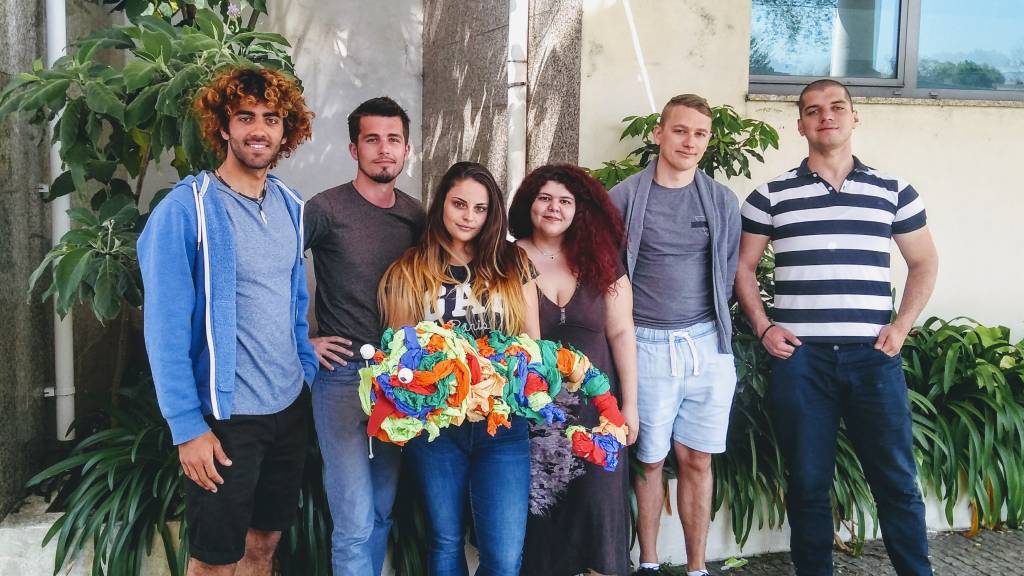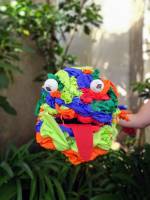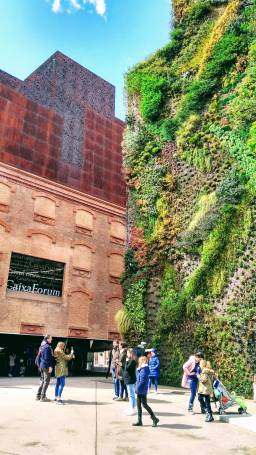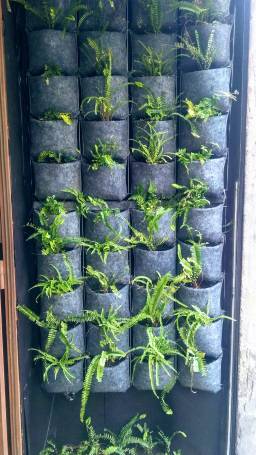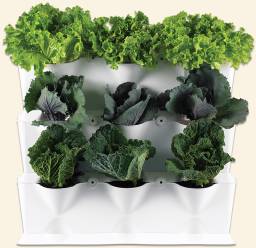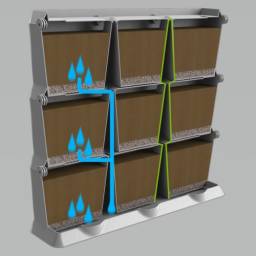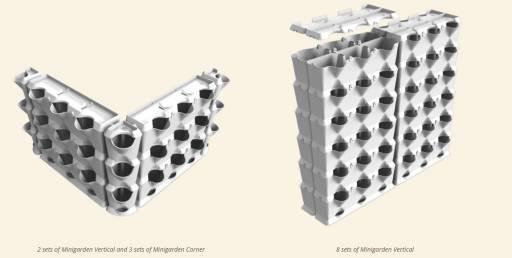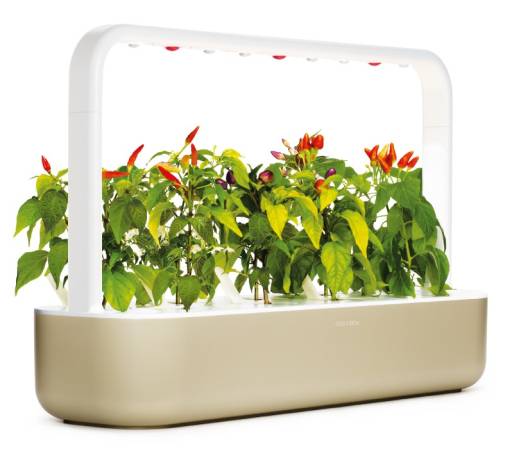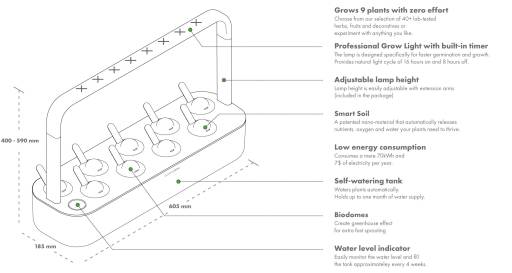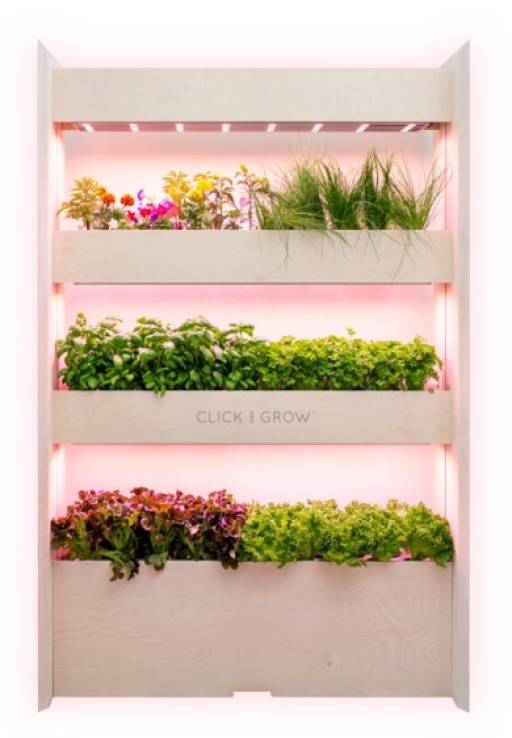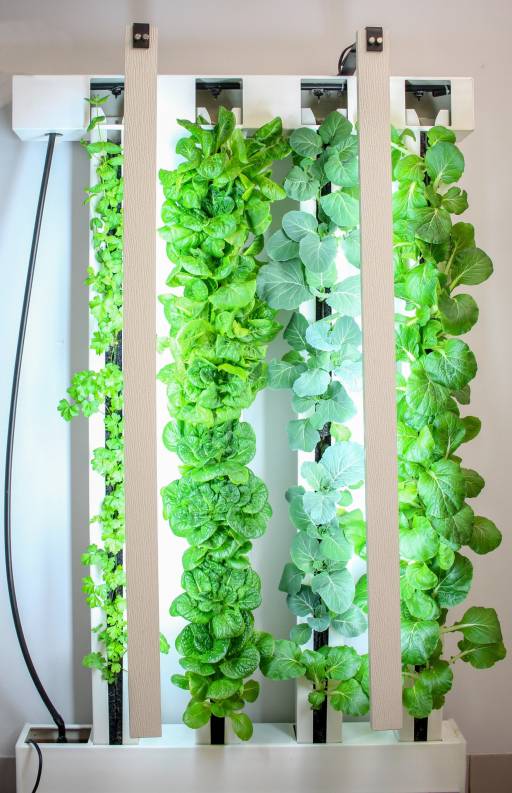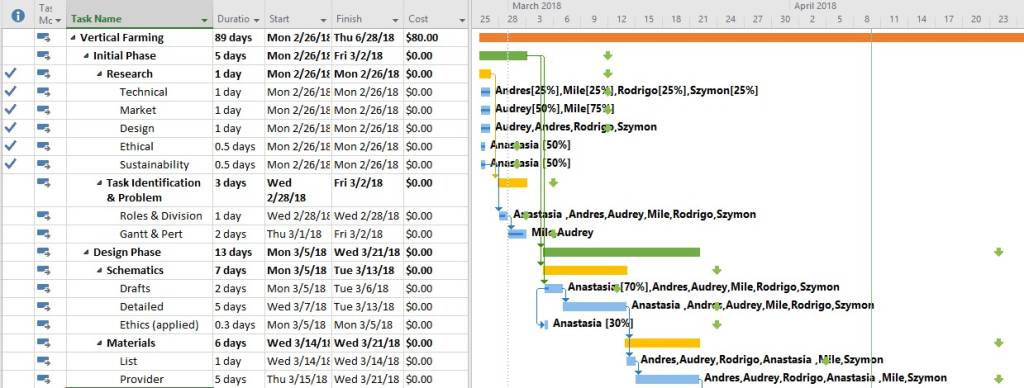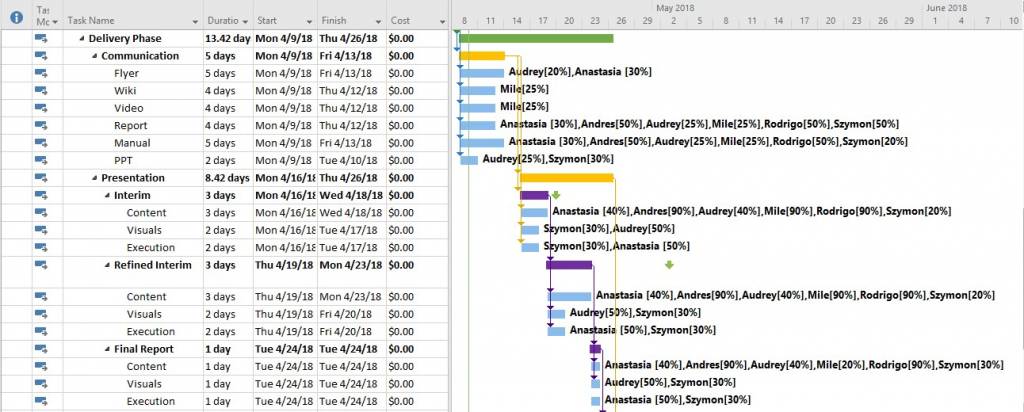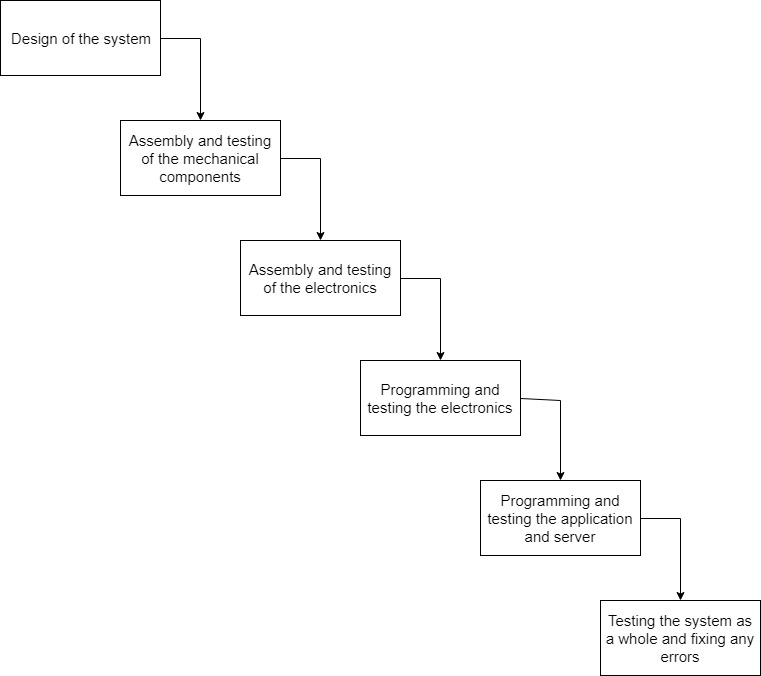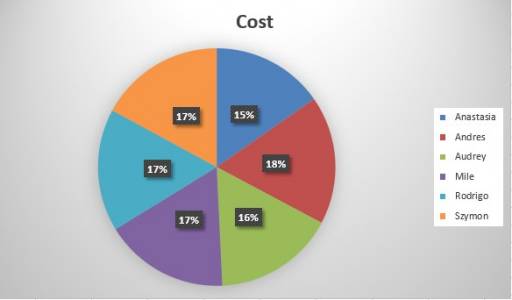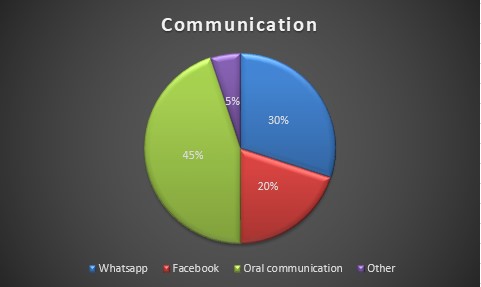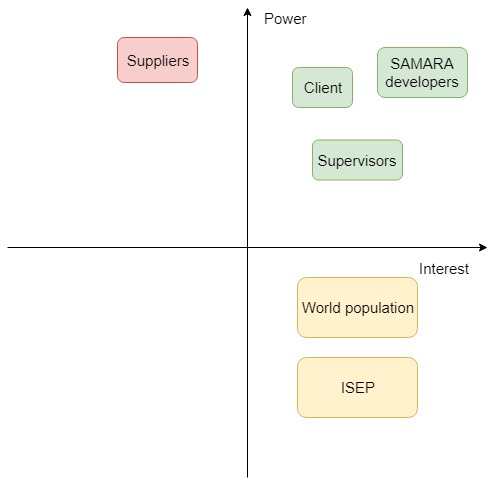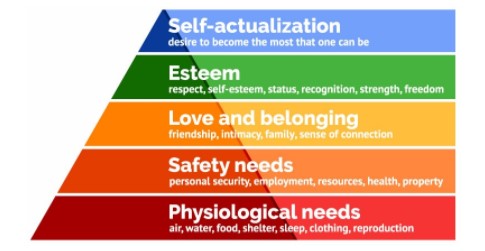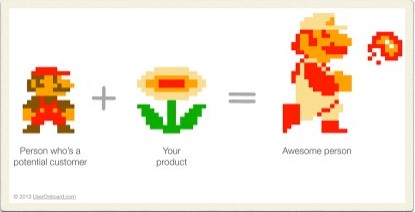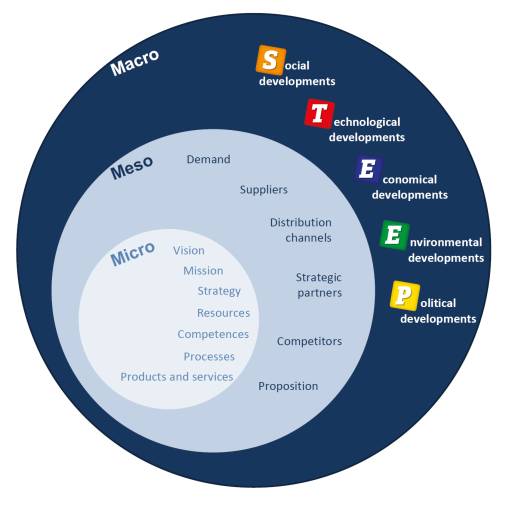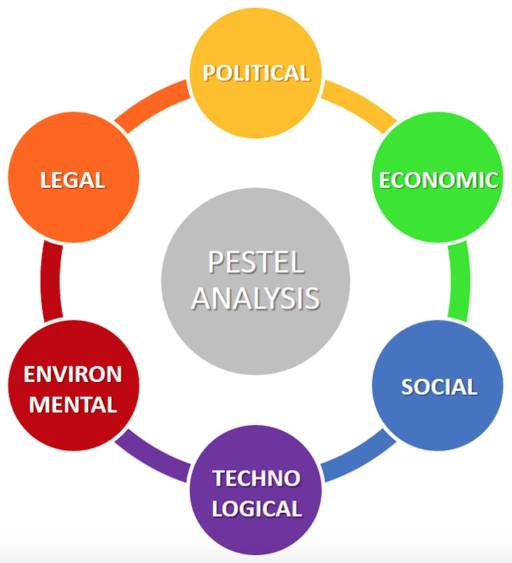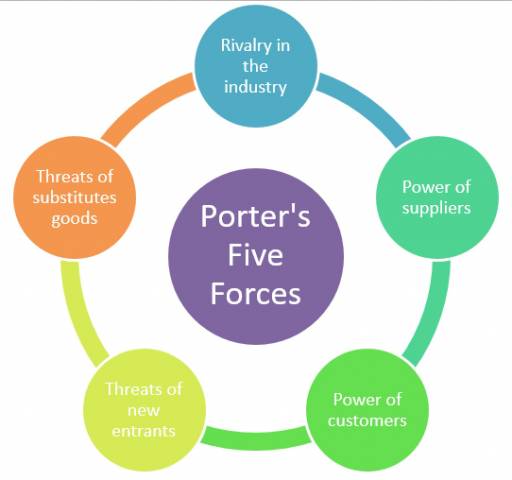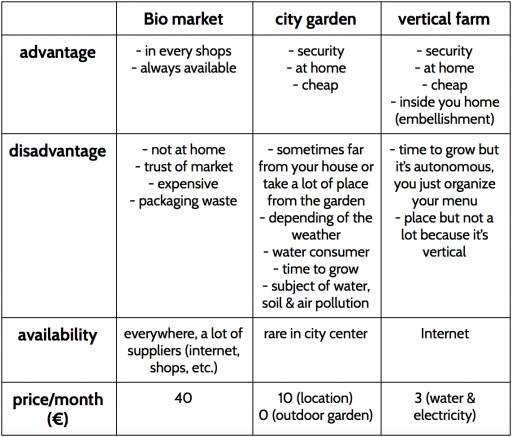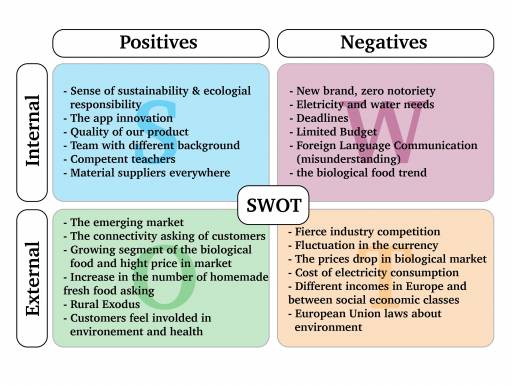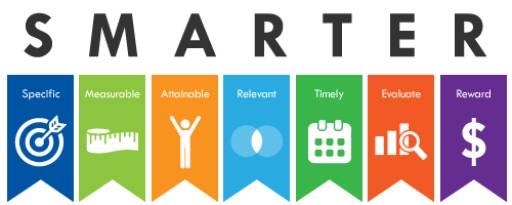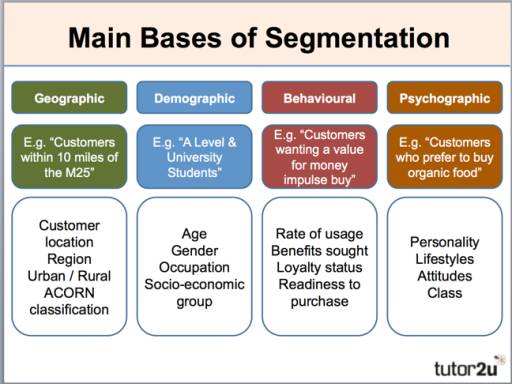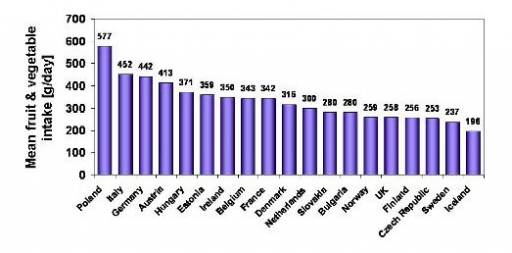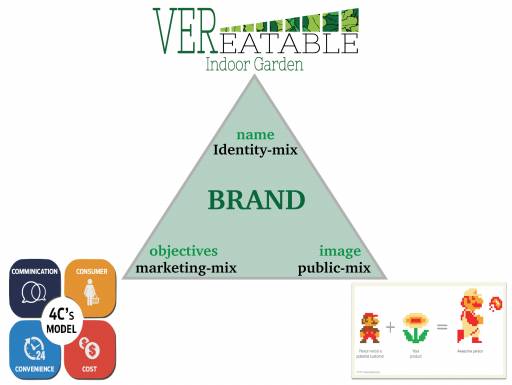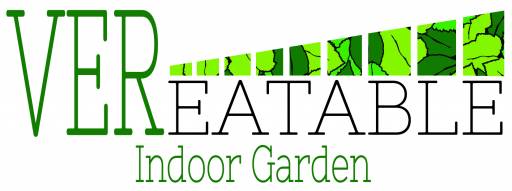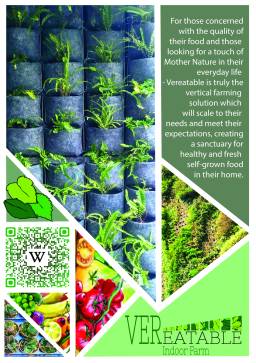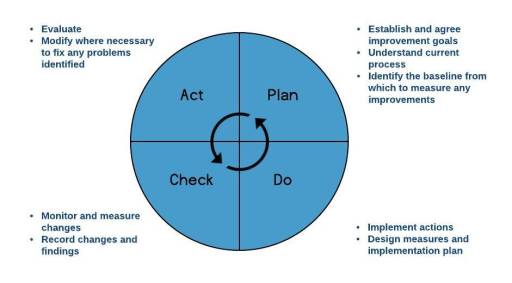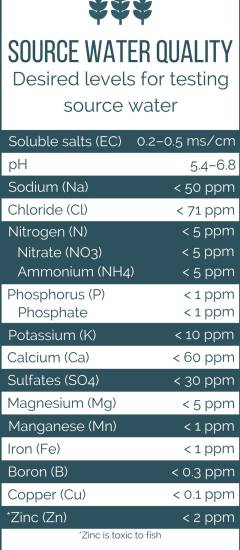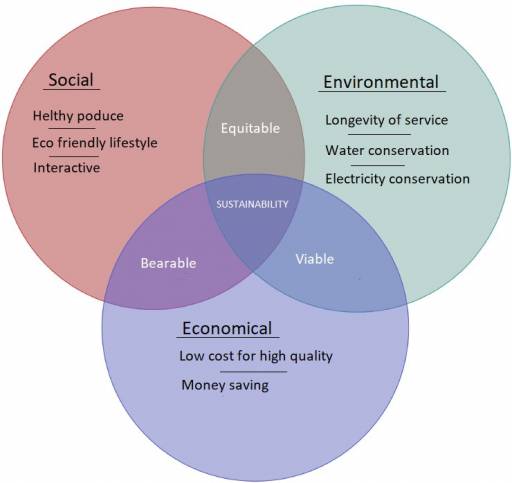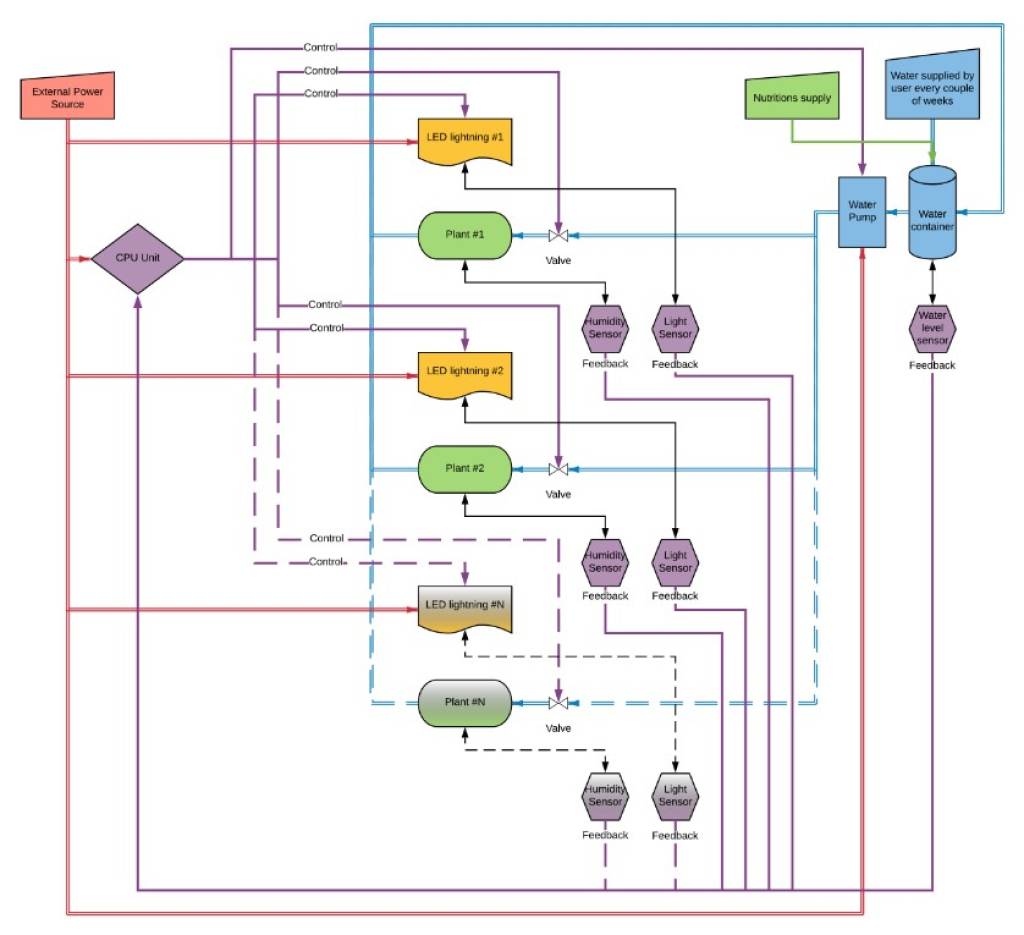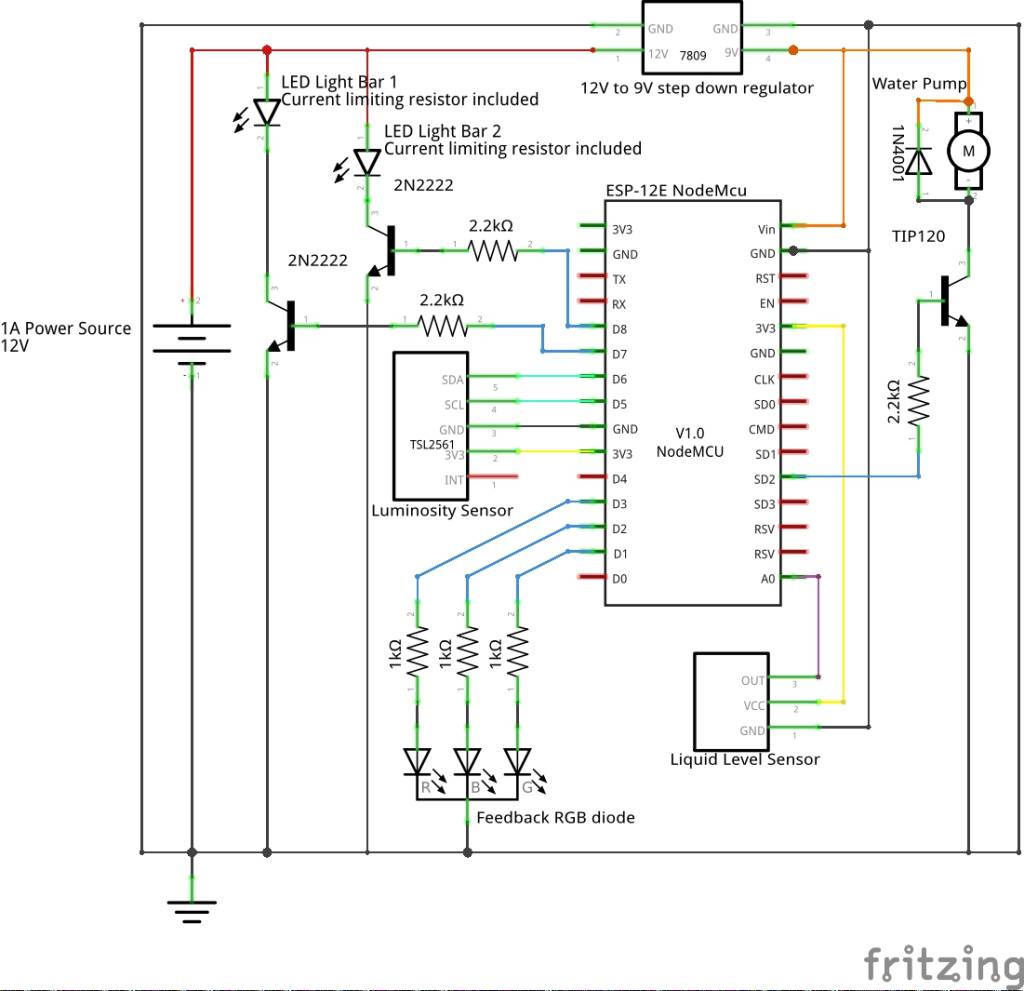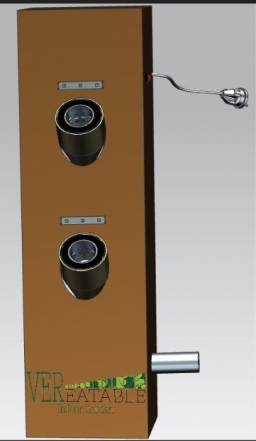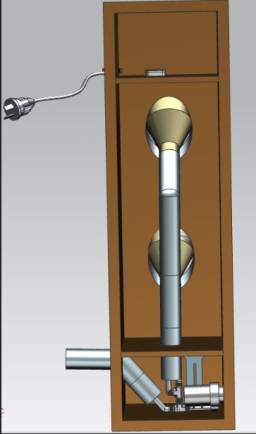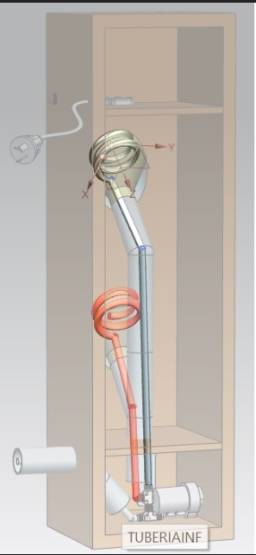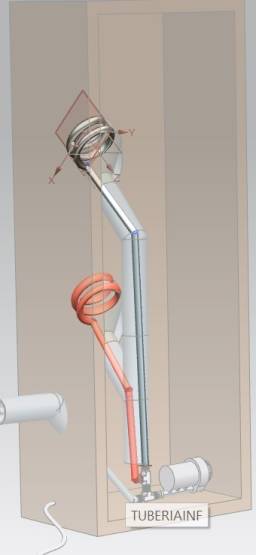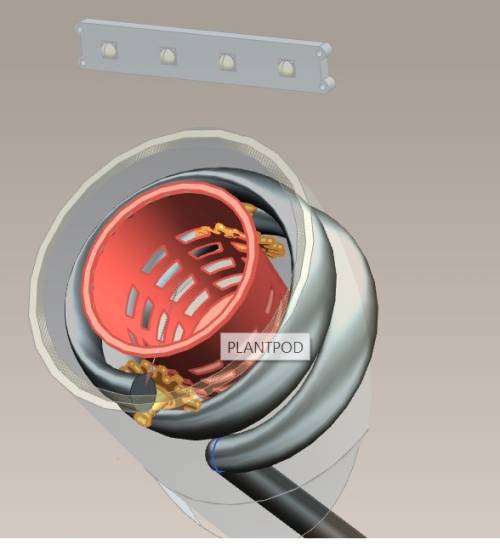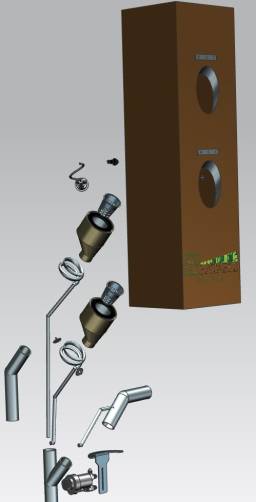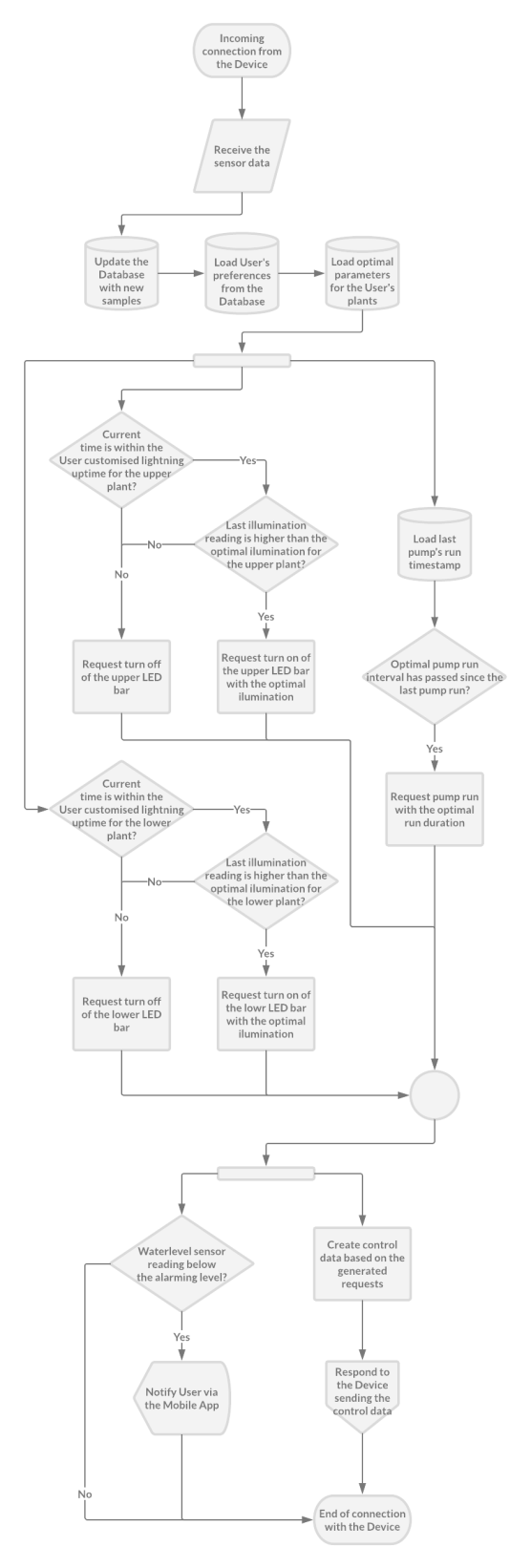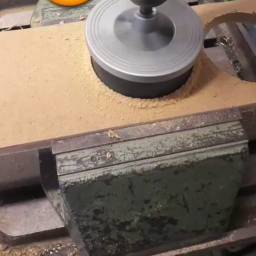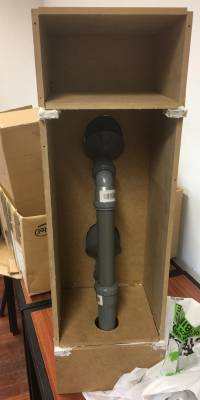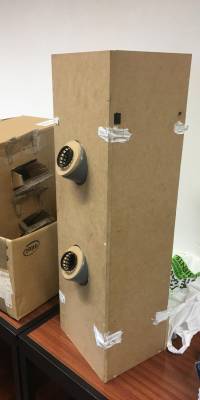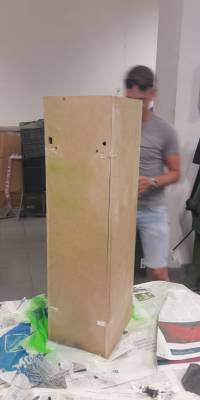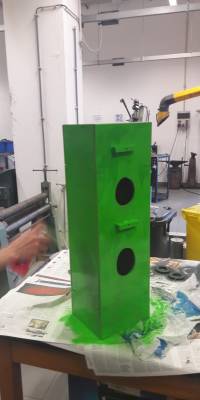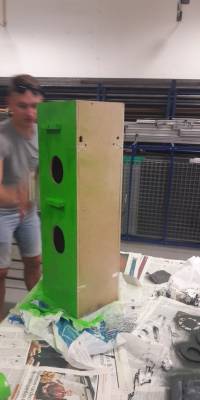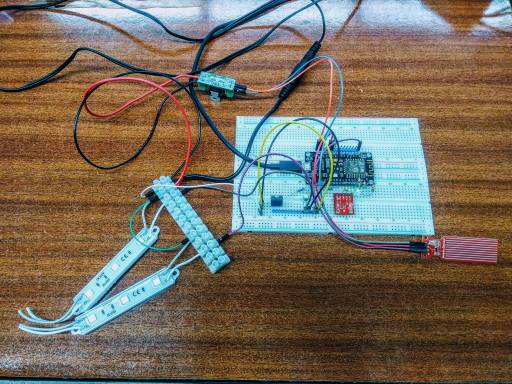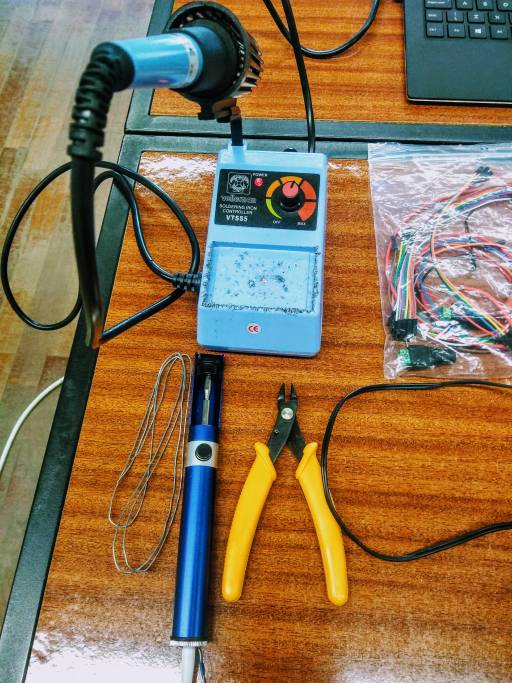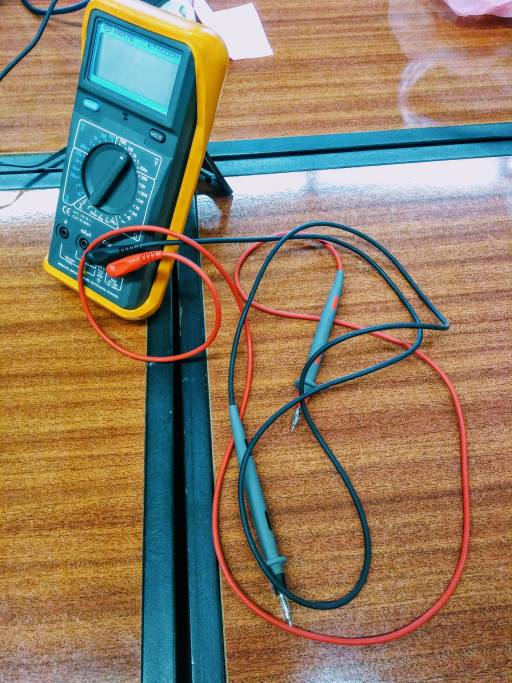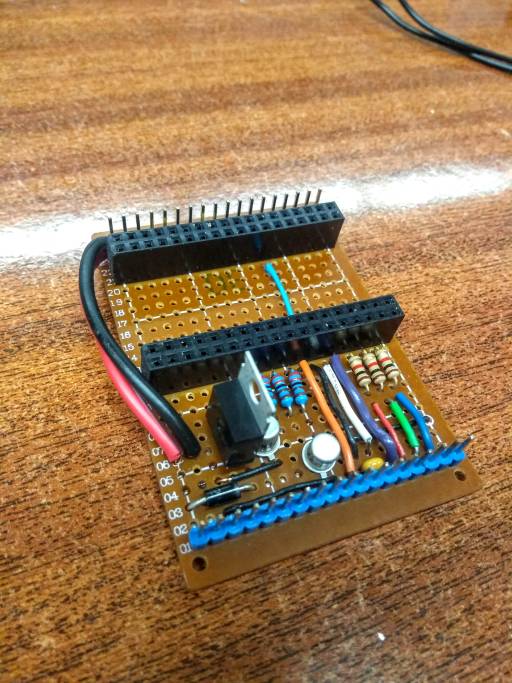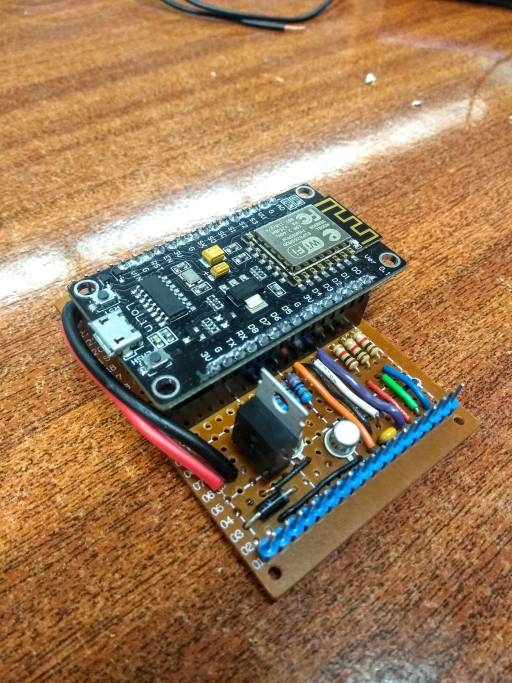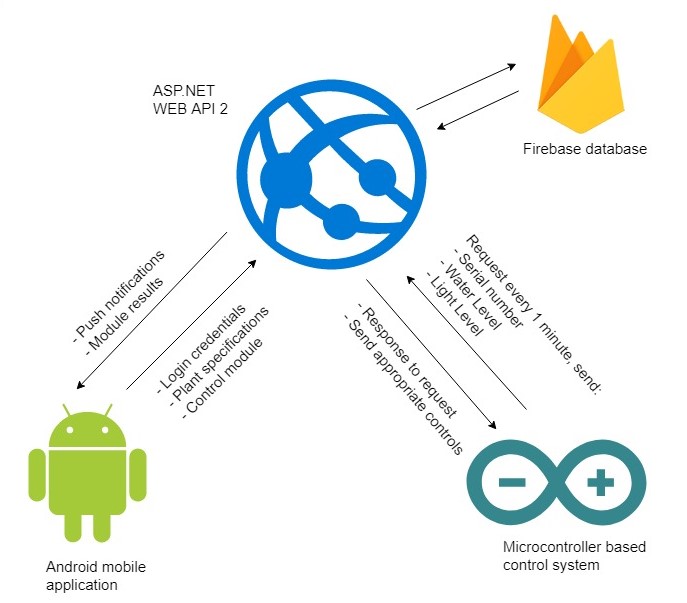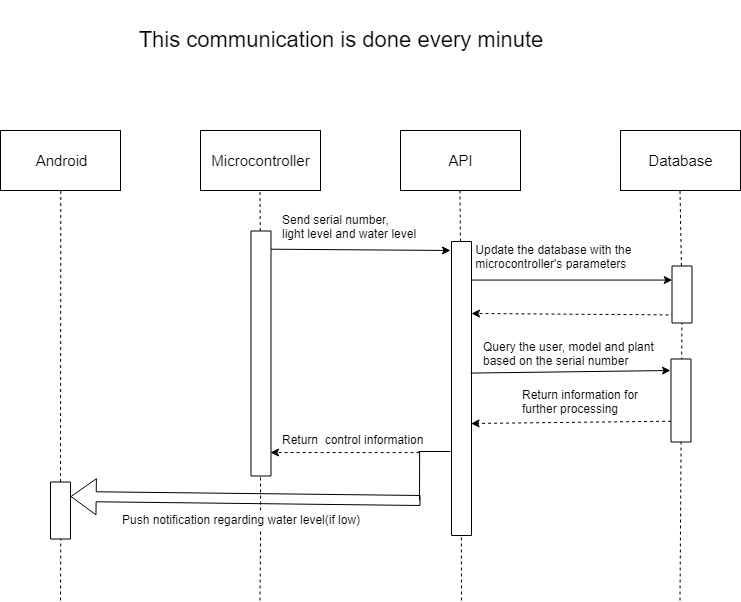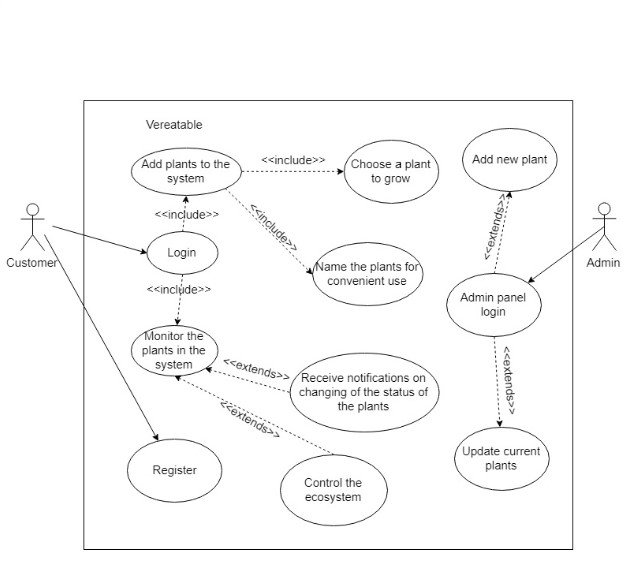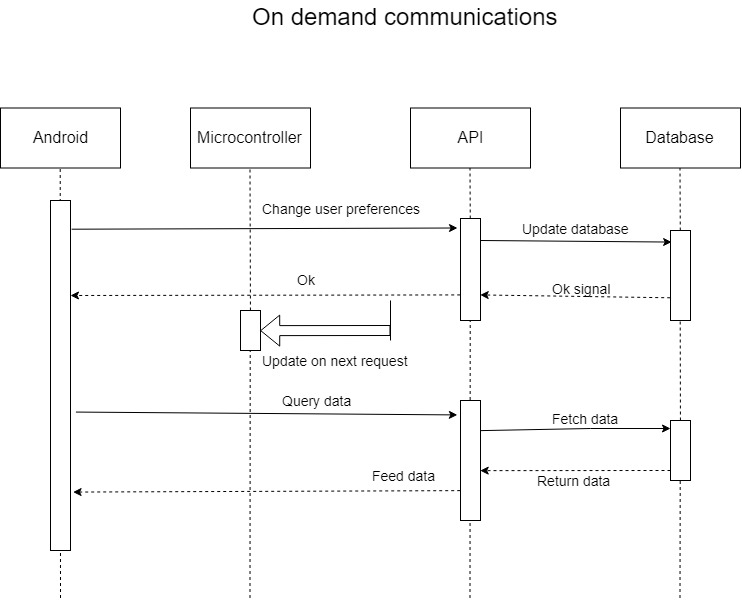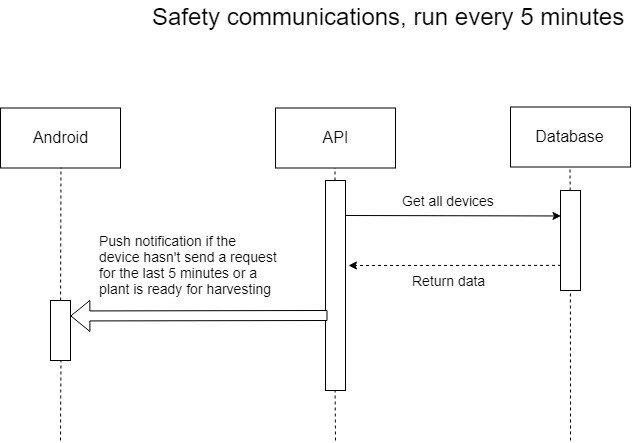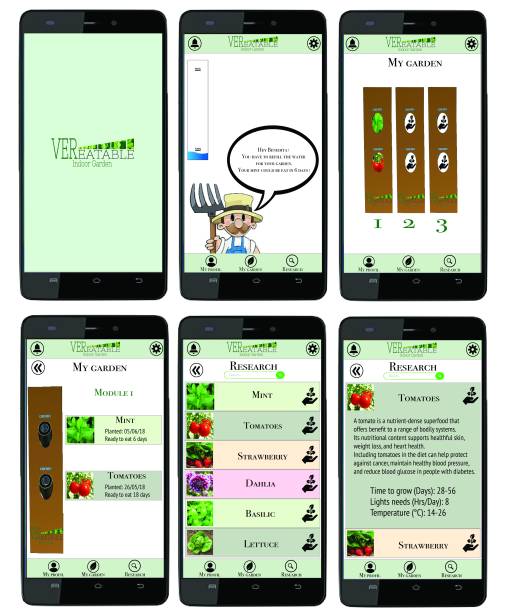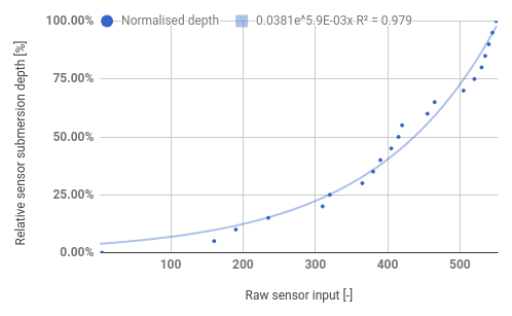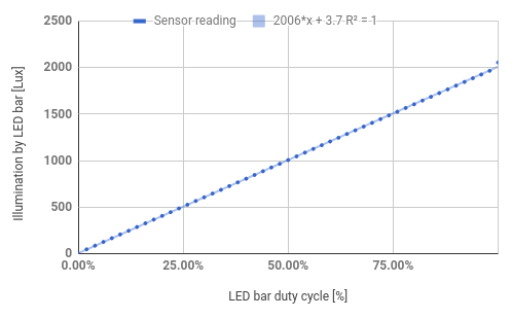Table of Contents
Report
Author(s):
- Anastasia Sevastiadou
- Andres Luts
- Audrey Pretot
- Mile Trendafiloski
- Rodrigo Basurto
- Szymon Błaszczyk
Acknowledgement
To be written once our work has been concluded.
Glossary
Across the text of our report, multiple abbreviations are about to be used. Table 1 provides a handy summary of all of them and serves as a reference material to whoever is to read through our work.
| Abbreviation | Description |
|---|---|
| API | Application Programming Interface |
| DIY | Do It Yourself |
| EMC | Electromagnetic compatibility |
| EPS | European Project Semester |
| EU | European Union |
| HPA | High-Pressure Aeroponics |
| IIS | Internet Information Services |
| IoT | Internet of Things |
| ISEP | Instituto Superior de Engenharia do Porto |
| LED | Light emitting diode |
| LPA | Low-Pressure Aeroponics |
| LVD | Low Voltage Directive |
| N/A | Not applicable |
| ND | No data |
| OS | Operating System |
| PAR | Parabolic Aluminized Reflector |
| PPT | Microsoft PowerPoint presentation, commonly as per .ppt file format used |
| PVC | Polyvinyl chloride |
| PWM | Pulse Width Modulation |
| RED | Radio Equipment Directive |
| REST | REpresentational State Transfer |
| ROHSEEE | Restriction of Hazardous Substances in Electrical and Electronic Equipment |
| USB | Universal Serial Bus |
1. Introduction
The following report serves as a summary of all the work done by the 1st appointed team of the Erasmus Project Semester programme at Instituto Superior de Engenharia do Porto in the spring semester of the academic year 2017/2018. The team consisting of six European students worked in the interdisciplinary, multicultural environment, for the whole semester investing their efforts into development of an innovative solution to a problem of the team's preference out of a list presented at the very beginning of the semester.
In the report, the full spectrum of the labour and research is about to be covered, from the introduction to the team, the task and the expectations toward the project, through recognition of the problem's state in the environment and the community at the time of writing, further toward analysis of the issue in the context of multiple different fields - management of work, marketing and media, efficient and sustainable development, and even any concerns of ethics it may rise.
That research being covered, any progress, conflict, or problem made and encountered during the project's development - all of these will be introduced and summarised in order to present the path leading to the final state the project has assumed by the end of the semester.
As an afterword, any and all of the unfulfilled ideas which could contribute to the further development of the project - should that ever happen - will be left for consideration, alongside conclusions drawn by the team and its members from the experience gained during the programme.
As the team, we grant our regards to anyone about to acquaint themselves with our work and would like to thank them for their time and consideration.
1.1 Team Presentation
Table 2 introduces the members of the team one by one. As a whole, the team - as seen in a group photo i.e. Figure 1 - has at first been assembled as “Team 1” of the EPS program at ISEP, Porto in the academic year 2017/2018. After getting to know each other, the group decided to assume the name “SAMARA”, which consists of the first letter of the name of each of the team's members:
- Szymon
- Audrey
- Mile
- Anastasia
- Rodrigo
- Andres
Each of the team's six members comes from a different country and from a variety of fields, different yet complement each other - with a noticeable emphasis put on the electrical aspect of the project, having three members carrying out studies in related fields. As a Belbin® composition, the group carries a small risk of struggling to set itself in motion, with multiple people dedicated to project execution but slightly missing on ideas creation and work coordination. Nevertheless, just as the world is not black and white, the Belbin® roles are not definitive and the SAMARA team carries out its work with good spirits and high morale.
1.2 Motivation
The team chose the topic of “Vertical farming”. This is due to the fact that vertical farming is considered to be the future of farming, eliminating a lot of space and making herbal products easier to access to the average person. In addition, we believe that vertical farming, as well as farming in general, could be simplified through partial automation using modern technologies, so an average person should produce goods with relative ease. Furthermore, the team is well prepared in tackling this task because each member can contribute to this project using their skills in the specific field which they study.
1.3 Problem
Traditional farming can take up a lot of areas and is very climate specific. This is due to the fact that some crops may grow in one climate but fail to produce the same results in a different one. Also, farming can be a difficult process that requires a lot of money spent on working and maintaining the soil and the plants. Additionally, toxic pesticides are used during the traditional farming process to prevent the crops to decay due to animal factor. While the pesticides are useful in repelling insects and other parasites or vermin animals, they are toxic also to humans and to domestic animals so they should be avoided.
As a team, we believe that an answer to the problem may come with employment of modern technology in the task of automating and standardizing food production. Moving crops to the highly controllable indoor environment should help to reduce resources intake, layered or vertical distribution would minimize the area occupied, and lack of environmental threats may remove the need for use of hazardous substances.
1.4 Objectives
The goal is to create a Vertical farming module that will reduce the space of traditional farming and it will make it easier for the average people to incorporate farming into their daily lives.
We will achieve the goal by making a modular product which will contain several crops inside. It will be aeroponics so that we will eliminate the need for using soil and we will grow the crops using water and fertilizers alone. Additionally, we will create an automated system using electronics so that we will simulate the climate that will be able to grow the specific crop.
Finally, all of the automation will be controlled by an android application so that the user that owns the product will be able to select and monitor which plant is being grown into the specific module.
1.5 Requirements
The solution we are to propose has been appointed a set of requirements to meet in order for it to be positively evaluated:
- Propose a modular solution, as in (one or both):
- Made of simple, highly compatible independent modules
- Having highly gradual control over well-separated sections
- Make the design adaptable to different size areas
Following the above, an array of common ground objectives standing before all EPS projects is:
- Restrict our spending to a budget of 100.00 €
- Use high-sustainability materials and solutions
- Use open source software
- Adopt the International System of Units [(ISU)]
- Comply with the EU rules and regulations:
- Machine Directive [(MACHINE)]
- Electromagnetic Compatibility Directive [(EMC)]
- Low Voltage Directive [(LVD)]
- Radio Equipment Directive [(RED)]
- Restriction of Hazardous Substances (ROHS) in Electrical and Electronic Equipment Directive [(ROHS)]
1.6 Functional Tests
For the project to be evaluated technically, expectations for its performance have to be set well in advance. Moreover, the prototype's first run obviously cannot take place during the final presentation - and so functional tests will have to be carried out.
Working with living organisms - either animals or plans - is always complicated. These cannot be taken apart and separately tried out under different aspects and in different fields. For a plant to grow its environment has to support its development as a whole. Nevertheless, some basic principles of operation for maintaining this environment can be predicted - and so our device should:
- Provide water and nutrition, in appropriate amounts and at appropriate intervals
- Provide lightning, of appropriate intensity and at the appropriate time of the day
- Offer space for the roots and the shoot of the plant to grow and develop
Besides that, the products should offer certain functionalities to its users, therefore being able to:
- Fall silent and turn off the lights at the nighttime, preferably defined by the user, not to disturb the owner with its operation
- Offer reminders about any maintenance operations necessary to keep it operational
Further, as an appliance connected to the electricity mains, the prototype should:
- Be properly grounded, not to risk electroshocking the user
- Keep the electric components safe from any moisture
Finally, an integrated test simulating real-life performance shall be carried - supporting an actual plant living in our device for an extended period of time.
1.7 Project Planning
Having our work unorganized could easily lead to a major workflow crisis - some tasks could be left unattended while others would have too many people focusing on them at once. In order to avoid such situations, a division of tasks to be performed throughout the project has been conducted, its results being summarised in Table 3.
| Task | Responsible | Involved |
|---|---|---|
| Research | Audrey, Szymon, Mile and Anastasia | Anastasia, Andres, Audrey, Mile, Rodrigo and Szymon |
| Technical Research | Szymon and Mile | Andres, Mile, Rodrigo and Szymon |
| Marketing Research | Audrey | Audrey and Mile |
| Design Research | Audrey | Andres, Audrey, Rodrigo and Szymon |
| Ethical Research | Anastasia | Anastasia |
| Sustainability Research | Anastasia | Anastasia |
| Task identification & Problem Definition | Mile and Audrey | Anastasia, Andres, Audrey, Mile, Rodrigo and Szymon |
| Roles and Division | Mile and Szymon | Anastasia, Andres, Audrey, Mile, Rodrigo and Szymon |
| Gantt | Mile | Audrey and Mile |
| Schematics | Anastasia, Andres, Rodrigo and Szymon | Anastasia, Andres, Audrey, Mile, Rodrigo and Szymon |
| Drafts | Rodrigo and Szymon | Anastasia, Andres, Audrey, Mile, Rodrigo and Szymon |
| 3D Drafts | Rodrigo | Anastasia, Andres, Audrey, Mile, Rodrigo and Szymon |
| Draft ethics | Anastasia | Anastasia |
| Materials | Audrey | Anastasia, Andres, Audrey, Mile, Rodrigo and Szymon |
| List | Audrey | Anastasia, Andres, Audrey, Mile, Rodrigo and Szymon |
| Providers | Audrey | Anastasia, Andres, Audrey, Mile, Rodrigo and Szymon |
| Assembly | Andres, Mile, Rodrigo and Szymon | Anastasia, Andres, Audrey, Mile, Rodrigo and Szymon |
| System Design | Andres, Mile, Rodrigo and Szymon | Anastasia, Andres, Audrey, Mile, Rodrigo and Szymon |
| Building the Mechanics | Rodrigo | Rodrigo |
| Building the Electronics | Andres and Szymon | Andres and Szymon |
| Programming the Electronics | Mile and Szymon | Andres, Mile and Szymon |
| Programming the Application | Mile and Szymon | Mile and Szymon |
| Testing | Andres, Mile, Rodrigo and Szymon | Anastasia, Andres, Audrey, Mile, Rodrigo and Szymon |
| Communication | Anastasia, Audrey and Mile | Anastasia, Andres, Audrey, Mile, Rodrigo and Szymon |
| Flyer | Anastasia and Audrey | Anastasia and Audrey |
| Wiki | Mile | Mile |
| Video | Mile | Mile |
| Report | Audrey | Anastasia, Andres, Audrey, Mile, Rodrigo and Szymon |
| Manual | Audrey | Anastasia, Andres, Audrey, Mile, Rodrigo and Szymon |
| PPT | Audrey | Audrey and Szymon |
| Interim Presentation | Anastasia, Audrey and Szymon | Anastasia, Andres, Audrey, Mile, Rodrigo and Szymon |
| Content | Anastasia, Audrey and Szymon | Anastasia, Andres, Audrey, Mile, Rodrigo and Szymon |
| Visuals | Audrey and Szymon | Audrey and Szymon |
| Delivery | Anastasia and Szymon | Anastasia, Andres, Audrey, Mile, Rodrigo and Szymon |
| Refined Interim Deliverables | Anastasia, Audrey and Szymon | Anastasia, Andres, Audrey, Mile, Rodrigo and Szymon |
| Content | Anastasia, Audrey and Szymon | Anastasia, Andres, Audrey, Mile, Rodrigo and Szymon |
| Visuals | Audrey and Szymon | Audrey and Szymon |
| Final Report | Anastasia, Audrey and Szymon | Anastasia, Andres, Audrey, Mile, Rodrigo and Szymon |
| Content | Anastasia, Audrey and Szymon | Anastasia, Andres, Audrey, Mile, Rodrigo and Szymon |
| Visuals | Audrey and Szymon | Audrey and Szymon |
| Execution | Anastasia and Szymon | Anastasia and Szymon |
| Wiki Presentation | Mile | Mile |
| Video to Wiki | Mile | Mile |
| Poster to Wiki | Mile | Mile |
| Paper to Wiki | Mile | Mile |
| Manual to Wiki | Mile | Mile |
| Final Presentation | Anastasia, Andres, Audrey, Mile, Rodrigo and Szymon | Anastasia, Andres, Audrey, Mile, Rodrigo and Szymon |
| Content | Anastasia, Audrey and Szymon | Anastasia, Andres, Audrey, Mile, Rodrigo and Szymon |
| Visuals | Audrey and Szymon | Audrey and Szymon |
| Execution | Anastasia and Szymon | Anastasia, Andres, Audrey, Mile, Rodrigo and Szymon |
1.8 Report Structure
This report is separated into eight chapters, each associated with a distinctive field of our research and work. Table 4 outlines the underlying purpose of each section.
| Chapter | Title | Purpose |
|---|---|---|
| 1 | Introduction | to introduce the team's composition and motives, define the topic undertook with requirements regarding it to be met, and outline our expectations for the project's outcomes and workflow |
| 2 | State of the Art | to analyze the current state of the market to be entered, identify a niche to be fulfilled among existing competitors, and present a selection of the most promising solutions and components to be employed in project development |
| 3 | Project Management | to establish the scope of the project, identify resources available, and to allocate them accordingly and efficiently to the tasks contributing to project solution |
| 4 | Marketing Plan | to try to identify the main target group of our product, recognize all internal or external factors possibly influencing our progress, and to estimate a long-term strategy to be applied for the introduction of our solution to the market |
| 5 | Eco-efficiency Measures for Sustainability | to identify the key aspects of the project that impinge on the ecological footprint and the precautious steps to be taken in order to maximize to the overall sustainability of our project toward the planet and the society |
| 6 | Ethical and Deontological Concerns | to comment on any concerns and ambiguities regarding our project from the point of view of engineering, social, market and environmental ethics |
| 7 | Project Development | to present the advancements of the actual project developments, walk through the steps taken by the team, including any problems expected or not with solutions applied, and to present the final outcome of our work in the form of an operational prototype/proof of concept - including results of basic functional tests carried out on the device |
| 8 | Conclusions | to conclude our work, summarise the achievements of the project, and to share any of our afterthoughts and possible visions for further development |
2. State of the Art
2.1 Introduction
In this section, the current state of the market we would like to introduce our solution to shall be discussed. As the problem of the ineffectiveness of conventional farming - both acreage- and resource-wise - has long been recognized, numerous approaches to addressing it have been already presented, many of them already made available for use by the general public. Examples stretch wide in scale and complexity. Huge installations are placed in public spaces, akin to the example of a green wall of CaixaForum building in Madrid, Spain pictured in Figure 2. At the same time, Do it yourself solutions are springing in some unexpected forms and places. An aesthetic green wall can be found at the entrance to a minor grocery store in Barcelona, Spain, one made from repurposed clothing organizer as depicted in Figure 3. Through careful scrutiny of these solutions, we will be able to acquire an overview of the customers' needs and expectations to be met in order to successfully enter the competition. Understanding the benefits offered by our to-be competitors should help us tailor an offer making us stand out from the crowd - or hopefully allow us to find a market niche yet to be claimed, one in which our solution could flourish.
Vertical farming is the practice of planting and growing various types of plants, usable for food or medicine manufacturing, in a vertical manner. This can come in different forms such as:
- vertically stacked layers
- vertically inclined surfaces
- integrated structures
Today, most vertical farming products and projects evolve into indoor vertical farming. By moving the process indoors, all the environmental aspects such as humidity, light, water supply, etc., can be controlled with fine-grain precision in one way or another. It can be done using artificial light to mimic sunlight, customized water piping system suited for watering the plants, and usually employs electronic hardware and dedicated software to observe and control the water supply, humidity, temperature, etc.
With the highly controllable environment comes high efficiency in resource management. Crops harvested through the means of vertical farming can use numerous times less water and energy than their conventional “industrially” farmed counterparts.
2.2 Scale recognition
Just like for the past decades edible plants and fragrant herbs could have been found both on immense fields attended by an army of workers and in handcrafted backyard gardens, the revolution of vertical farming comes in different sizes - from gigantic and complex systems filling up whole workshops and suitable for commercial application, through school-sized glasshouse DYI projects helping to plant healthy lifestyle in pupils' heads, up to household-sized solutions treated as personal investment into one's health and well-being.
Extensive research which would cover all the aforementioned spectrum of cases and applications would be overly time-consuming. The team decided therefore in advance to focus on just a single branch of these devices' development. Once a whole array of factors - limited budget, set of skills at hand, room for creative freedom, target group, personal preferences of the team members, and others - have been discussed, the team SAMARA decided to put its efforts into a project able to cover needs of a single family or a small, well defined community - like a class of students, start-up company or neighbours sharing the same staircase.
Among arguments in favour of this approach were given:
- Small scale more suitable for limited budget of ours
- Use case giving huge odds for the device to be placed indoors, in a steady and safe environment
- More familiar and easier to reproduce marketing process addressing individuals, not huge businesses or city authorities
- Greater creative freedom for innovative functionalities, when compared to industrial-grade solutions focused mainly on efficiency
That being established, the following chapter is about to cover our research in the field of private-use indoor farming solutions currently available on the customer market.
2.3 Products on the market
2.3.1 Minigarden Vertical
This vertical farming solution originating from Lisbon, Portugal promises to contribute to an Urban Green Revolution [(urbanGreenRevolution)], bringing a simple and scalable solution for introducing self-grown edible plants to the urban areas. Their concept is an affordable, straightforward system for creation of green walls, big or small, outdoors or indoors[(minigardenVertical)], helping to reconnect with Mother Nature.
Minigarden Vertical is a highly modular solution with building modules designed to fit each other vertically, horizontally, and back-to-back. This is expected to provide freedom of attuning the system to the needs and possibilities of one's living space.
Modules are built of high-strength polypropylene copolymer and contain additives that provide UV protection. This is done so that Minigarden Vertical is capable of withstanding extreme weather conditions such as solar radiation and extreme temperature [(minigardenVertical)]. At the same time, the materials used are promised to be 100 % recyclable and to comply with appropriate an appropriate EU directive[(eudirective)] regarding materials intended to come in contact with food [(minigardenVertical)]. A single building module provides space for three separate plants to grow. Plants are grown in soil - each module is to be filled with clay and earth upon setup.
Minigarden's modularity is extended through various supporting pieces - bottom tray collects any runoff of drainage water. Top lid encloses the head of the build when no more modules are to be added vertically. Together with three basic modules, these can be bought as a set, as seen in Figure 4. Further widening the offer available are Minigarden Corner modules, allowing build of L-shaped turns and complex structures, as seen in Figure 6, wall-support hangers, and irrigation kits centralising the water flow through the system as seen in Figure 5, and allowing its connection to the water mains or e.g. gardening water dispenser.
Albeit of irrigation kits being part of the offer, plant watering cannot be said to be fully automated with a lack of intelligent water distribution unit. It is up to the user to water the plants regularly or to create themselves a solution to supply the irrigation net appropriately. No proprietary lightning solution is proposed - the product is fully mechanical and contains no electrically powered elements.
Table 5 briefly summarises the specification of this product.
| Attribute | Comment |
|---|---|
| Dimensions | 57 x 64.6 x 19 cm (HxWxD) |
| Weight | 3.35 kg |
| Farming technique | Soil-based farming |
| Max. plant capacity | 9 |
| Expandability | Yes, huge possibilities of expansion through stacking and connecting additional modules |
| Automated watering | No, although key elements required for an appropriate system are available |
| Automated lightning | No artificial lightning |
| IoT aspects | N/A |
| Water consumption | NDA |
| Power consumption | N/A |
| Price | 39.99 € [(minigardenPrice)] |
2.3.2 Click & Grow
Based in Tallinn, Estonia, Click & Grow startup established in 2010 sets itself up with a mission of making the essential, fresh, and healthy food free for all the people of Earth. In order to achieve this admirable objective, Click & Grow offers high-quality indoor gardens and food growing systems bringing large and self-sustainable farms to locations in greatest need of them [(clickandgrow)].
2.3.2.1 Smart Garden 3 / Smart Garden 9
The idea behind the Smart Garden products originates from Click & Grow founder's inspiration with work of NASA regarding farming solutions for manned space missions to Mars [(clickandgrow)]. The key feature of all Click & Grow products is a coffee-machine-like model of compatible plants distribution - they are being sold in capsules compatible with the device. Each capsule hosts a seed embedded in an advanced nanotech growing material, labelled as Smart Soil. It is promised that Smart Soil on its own addresses the issues of proper irrigation, oxidation, and nutrition of plant's roots, without any use of GMO or pesticides, leading to naturally grown greens [(clickandgrow)]. Smart Soil is finely attuned to individual needs of each type of plant in Click & Grow's offer, providing the very environment needed for the optimal growth. The company claims that their technology cuts overall ongoing costs of farming by 70 %, water usage by astonishing 95 % while offering 30 % faster growth of the plants [(clickandgrow)].
The Smart Garden 9 unit seen in Figure 7 is a self-growing indoor garden designed to serve as a growing platform for a wide variety of plants: fruits, vegetables, herbs, salads, and flowers. User input required is minimal and limited to installation of the plant capsules and attending to the water level within the device - with the reservoir holding up to a month of operation worth of water [(SmartGarden9)]. The water is not pumped anyhow but slowly soaked in instead by the Smart Soil capsules. Above growth area, there is an LED bar providing proprietary, automated lighting to plant-inhabitants, with a mixture of red and blue LEDs for the optimal colour spectrum [(MSUhrt)].
The device functions as a household appliance similar to a food processor or a coffee machine - with an all-in-one build and foolproof refills all it takes is to place the Smart Garden in a convenient point and plug it to electric mains. Also in the company's offer is a smaller model of the device suitable for up to 3 separate plants [(SmartGarden3)], suitable for households with more limited space and/or smaller demand for fresh self-grown greens.
It is worth to notice that Smart Garden line of products does not satisfy the term of a vertical farming solution - all plants are grown in the same vertical space. Leaving aside the manner of an effective use of space, these devices do fulfil the mission of providing their owners with a steady supply of fresh and healthy plants using highly sustainable and ecological methods, and so they will pose as a direct competition to any device which offers the same benefits via means of vertical farming.
Table 6 and Figure 8 briefly summarise the specification of this product.
| Attribute | Smart Garden 3 | Smart Garden 9 |
|---|---|---|
| Dimensions | 22.7 x 31.5 x 13 cm (HxWxD) | 40 x 60.5 x 18.5 cm (HxWxD) |
| Weight | 1,77 kg | 2.43 kg |
| Farming technique | Soil-based farming | |
| Max. plant capacity | 3 | 9 |
| Expandability | No, comes as an all-in-one standalone device of limited capacity | |
| Automated watering | Yes, with a need for monthly refills | |
| Automated lightning | Yes, with LEDs of 10.000 lux, operational 16 h a day | |
| IoT aspects | Mobile App available, with no impact on device's operation, providing tips, recipes, and social media features | |
| Water consumption | 0.3 l / week | 0.9 l / week |
| Power consumption | 0.7 kWh / week | 2.4 kWh / week |
| Price | 99.95 € [(SmartGarden3)] | 199.95 € [(SmartGarden9)] |
2.3.2.2 Wall Farm / Wall Farm Mini
Click & Grow's offer does not end at the coffee-machine-sized, kitchen-countertop-fitting, automated indoor plant stations. Recognising the spacial limitations of non-vertical solutions and to provide a higher capacity solution to customers unsatisfied with the vision of acquiring multiple Smart Garden devices described in the Section 2.3.2.1, the company has introduced Wall Farm line of products. These made of wood wardrobe sized constructs are extending the idea behind Smart Farm products, by increasing the total capacity of the device, also through utilizing the third, vertical dimension for plants allocation. While dimensions being amped up, the modus operandi remains the same, with plants being hosted in individual Smart Soil capsules supplying themselves with water stored in the reservoirs beneath them.
Wall Farm products are indoor vertical gardens that grow fresh herbs, fruits and leafy greens all year round and hyper-locally [(wallfarm)]. With this line, Click & Grow reinforce their concept of coffee-machine inspired distribution, with a monthly subscription of additional plant refills being added automatically to each Wall Farm order [(wallfarm)].
Although being advertised as truly affordable indoor food production system [(wallfarm)], with a selling point of more than a dozen hundred of euros for the Wall Farm unit [(wallfarm)] this product might be more suitable for restaurants, schools, and shops than for individual households.
Table 7 briefly summarises the details of the Wall Farm products.
| Attribute | Wall Farm | Wall Farm Mini |
|---|---|---|
| Dimensions | 202 x 135 x 40 cm (HxWxD) | 148 x 135 x 25 cm (HxWxD) |
| Weight | 70 kg | 50 kg |
| Farming technique | Soil-based farming | |
| Max. plant capacity | 51 | 34 |
| Expandability | No, comes as an all-in-one standalone device of limited capacity | |
| Automated watering | Yes, with a need for monthly refills | |
| Automated lightning | Yes, with LEDs of 10.000 lux, operational 16 h a day | |
| IoT aspects | Mobile App available, with no impact on device's operation, providing tips, recipes, and social media features | |
| Water consumption | 8.75 l / week | 3.5 l / week |
| Power consumption | 14.4 kWh / week | 9.6 kWh / week |
| Price | 1299.00 € [(wallfarm)] | 899.00 € [(wallfarmmini)] |
2.3.3 ZipGrow FarmWall
ZipGrow is a Canadian company specializing in commercial scale, modular vertical gardening systems. Recognising the current interest of the market in household-fitting, small-to-medium scale solutions, the company has attuned their systems to a wall-mounted, self-sustainable device.
According to the authors, ZipGrow's FarmWall is designed to provide a low maintenance, high yield hydroponic farming system that is modular and automated. The authors suggest that the product is easy to use and using it, customers have a very efficient vertical farming product. [(zipfarm)]
The Wall is made of food-safe PVC that holds towers in place. The main base can contain five 152 cm towers. Each tower has an opening in the middle where you can put plants inside. There is not an exact number of plants that you can put inside, you can put plants as long as you have more space in the tower. There are two gutters, a lower gutter, and a higher gutter. The lower gutter holds the water, nutrients and the pump of the system, while the higher gutter holds the plumbing and the drip emitters. A fully installed kit can be seen in Figure 10.
The towers can be easily removed from the base which makes it easier for harvesting, planting and organizing space. Additionally, the wall has rear-mounted brackets that can easily clip into the provided wall mounts. [(zipfarm)]
In Table 8 technical details regarding the ZipGrow's product have been summarised.
| Attribute | Comment |
|---|---|
| Dimensions | 170 x 106 x 45 cm [(zipfarmshop)] (HxWxD) |
| Weight | Up to 105 kg |
| Farming technique | Hydroponics |
| Max. plant capacity | N/A, depending on the size of the plants |
| Expandability | No, the base can only accomodate limited amount of towers |
| Automated watering | Additional equipment required to establish daily cycles [(zipfarmbuyer)] |
| Automated lightning | Additional equipment required to establish daily cycles [(zipfarmbuyer)] |
| IoT aspects | N/A |
| Water consumption | NDA |
| Power consumption | N/A |
| Price | 1,199.00 $ ~ 969.00 € [(zipfarm)] |
2.3.4 Conclusions
With an overview of the current market situation we have noticed a major niche looming in the field of small-scale self-sustainable indoor farms - namely, none of the highly automated solutions comes as a scalable, expandable system.
Minigarden Vertical's modularity described in Section 2.3.1, one that helps it adapt to various spaces and applications, comes at a price of low independence. For the plants to thrive the system has to have access to direct sunlight - or be placed in an otherwise illuminated area. Without any subsidiary investments, the watering process would call for approaching every single plant with a watering can. Even with an irrigation set installed the plants won't be supplied with water without human interaction, unless one comes up with a DIY extension connecting Minigarden to the mains. To some potential buyers, the amount of labour this system is calling for may simply be repelling.
On the other hand, highly automated solutions like Click & Grow's Smart Garden from Section 2.3.2.1 or ZipGrow's FarmWall from Section 2.3.3 are offered at a relatively high selling point - what might be understandable having that they are almost “self-aware” smart devices - but at the very moment of purchase bound the customer with their limited capacity. If a person buys themselves a Smart Garden 3 unit in order to try out the idea of self-grown herbs and gets involved in it, there is no simple solution to increase the “farming area” available. A problem arises - whether to buy another small device and use both or upgrade to a bigger model, but try to place the predecessor on a second-hand market? Another answer would obviously be over-investing into a higher capacity-to-price-ratio device in the first place - but then again, not many will be willing to allocate their resources in an experimental purchase.
Considering all of the above, the ideal solution appears to be a smart - possibly IoT enabled - device one can expand at least to a certain extent with time, alongside growing interest in the idea of indoor vertical farming. That is a niche in the market we as a team could try to claim to introduce our product.
2.4 Selection of Technology
Soil indoor (drip system) is a method of growing plants in soil and nutrients solution is already added to soil, for plant whole lifespan[(clarkin)]. The soil was not an option because it is too frugal. That did not fit with our vision of the creation of a mobile app that would allow the user to control and monitor their indoor garden - too many variables could be taken into consideration. Also, this traditional approach was not innovative enough.
Hydroponics is a method of growing plants without soil, using mineral nutrient solutions in a water solvent[(clarkin)]. Plant roots are in water constantly. Hydroponics was the initial to-go technology because of the wide availability of related texts and materials, and due to relatively low costs of implementation. However, we had problems proposing a solution that would keep hydroponics modular in an easy to operate way. But the decisive part for us was that we wanted more complex system.
Aquaponics refers to any system that combines conventional aquaculture (raising aquatic animals) in a symbiotic environment. Excretions from animals are being used as nutrients. [(clarkin)] Plant roots are in water constantly. This type of indoor farm had already been done in past years of the EPS@ISEP programme, and so we did not want to take the same path.
Aeroponics is the process of growing plants in an air or mist environment without the use of soil or an aggregate. [(clarkin)] Seems like a way to go for future, its most water efficient, the fastest growth rate for the plant. [(aeroDIY)] Suitable for a big variety of different plants. For example, misting for Romaine salad lasts for 6 seconds every 4 minutes. For us, it seemed like the most perspective way to go ever since week 2, yet for weeks to follow we had struggled to put together a budget proposal that would include all the components necessary - and so as a team we have fallen back to the hydroponic technology. Iteration after iteration, our budget plan became more and more sustainable, up to the point at which the aeroponic solution became possible again and is going to be implemented in our prototype device.
2.4.1 Low Pressure Aeroponics vs. High Pressure Aeroponics
The aeroponics techniques can be further sub-divided into two distinct branches from the point of view of the pressure created inside the water delivery installation. High-Pressure Aeroponics (HPA) and Low-Pressure Aeroponics (LPA) systems are distinguished. In the former, water is kept inside an air-tight installation and circulated under high-pressure - often up to 100 PSI [(hydroguy)]. It is so in order to create a microscopic-sized mist that is used for watering the roots of the plants inhabiting the system. This technique has an array of upsides, including high oxidation levels of the mist, high efficiency of pump-to-plants ratio, and a possibility to eliminate the need of recollecting the water should all of the unused mist evaporate right after distribution [(eaeroponics)]. Yet these advantages do not come without a cost - HPA systems are prone to dangerous leaks due to the pressure they create, when applied in the household may prove to be disturbingly noisy, and their misting sprayers can clog easily having microscopic holes diameter [(hydroguy)], [(eaeroponics)]. Above all, however, HPA system could prove too complicated in implementation for our limited budget and minimal experience in the field. LPA solutions, including prototype-tier DIY variants, can be found across the internet easily, providing us with a lot of material to consider. Although LPA farmed plants may not grow as rapidly as HPA treated ones [(hydroguy)], the former is still highly effective and combined with simple implementation proves to be the appropriate technology to use in our device's prototype implementation - even if the market viable model would be to utilize HPA.
2.4.2 Plants that you can grow in Aeroponics system
In the aeroponics kind of farming, plant seeds, cuttings or saplings are put in netted cup suspended in a growing room, nutrient-laden water is supplied in mist type supplying nutrients for germination and crops to grow. Even though there is a limitation for a number of kinds of plants to develop, a grower has every opportunity to research in growing more forms of crops. Some types of plants that are being cultivated successfully are as follows. [(agrifarming)]
- Vegetable plants: cauliflower, cabbage, broccoli, beans, tomatoes, cucumbers, gourds, potatoes, beets, carrots, eggplants, peppers, corn, salad and much more. [(agrifarming)]
- Fruit plants: melons and strawberries. [(agrifarming)]
- Herbs: mint, skullcap, nettles, ginger, dill, spring onion, basil, chervil, chives. [(agrifarming)] [(illinois)]
2.4.3 Cloning
Instead of growing your plant from a seed, there is an option to take cuttings and root them in fine mist-thus. Freeing you up from the regular expense of buying seeds and also saves a lot of time by skipping growth phases. [(agrifarming)]
Cloning itself needs a lot of skill and knowledge. The environment has to be kept constantly at 18-21 degrees and relative humidity around 60% or more. The temperature control is a very major factor, over the temperature fungus starts to develop and grow rapidly. [(just4growers)]
Cuttings don’t require much light, because the goal is for them to grow roots instead of growing the plant itself but some are still needed. Also in this stage, direct sunlight should be avoided. Thermometer and live feedback are very useful, to not overheat the water. [(just4growers)] [(agrifarming)]
2.5 Conclusion
Based on the research done by the team on the topic of State of the Art, the team decided that the product should:
- Be modular and easy to use
- Use aeroponics/hydroponics
- Use some electronics that will monitor the plants' status
- Incorporate some form of automatization of growing the plants
- Use a mobile application for simple and effective use
We believe that by following these points we will create a product that will have a high market value and will be a strong competitor in the market and contribute highly to the future of vertical farming.
3. Project Management
3.1 Scope
Our team created a graph about the scope of the project. This is because we do not want to mix the responsibilities and we would like to have a good overview of what we need to do in our project and we can schedule the time much easier. The scope of our project is written down visually in Figure 11 and in plain text below.
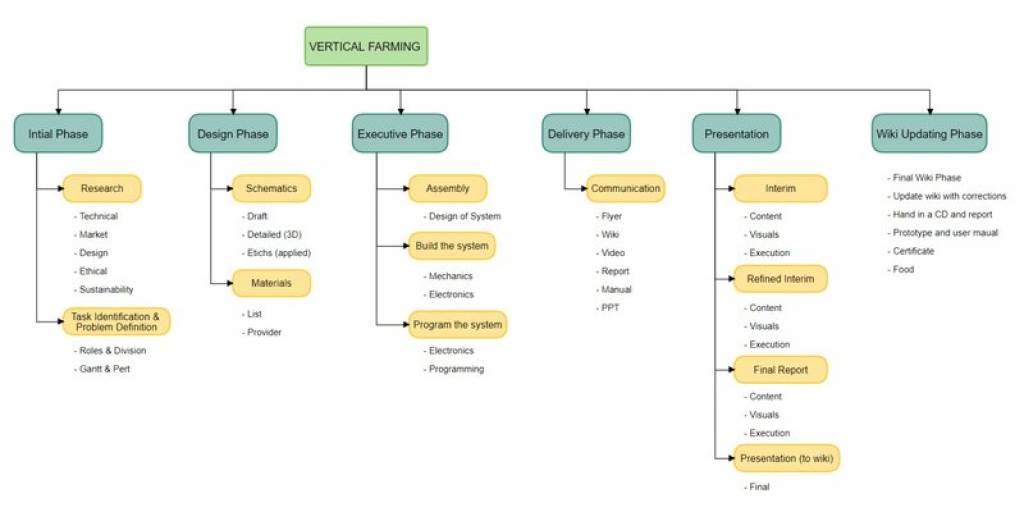
- Initial Phase
- Research
- Technical
- Marketing
- Design
- Ethical & Sustainability
- Task identification and definition
- Roles & Division
- Gantt chart
- Design phase
- Schematics
- Draft
- Detailed
- Apply ethics to the schematics
- Materials
- List
- Providers
- Execution phase
- Assembly
- Designing the system
- Build the system
- Mechanics part
- Electronic part
- Programming the system
- Program the electronics
- Program the android application
- Delivery phase
- Communication
- Flyer
- Wiki
- Video
- Report
- Manual
- PPT
- Presentation
- Interim
- Content
- Visuals
- Execution
- Refined interim
- Content
- Visuals
- Execution
- Final Report
- Content
- Visuals
- Execution
- Presentation
- Final presentation(on wiki)
- Wiki updating phase
- Final wiki phase
- Update wiki with corrections
- Hand in CD and report
- Prototype and user manual
- Get Certificate
- Prepare food
3.2 Time
3.2.1 Gantt chart
Using Microsoft Project, our team specified the Gantt chart for the time management of the project. This is because Microsoft Project is an excellent tool for Task management and allocating people and resources to each task. Figure 12 shows the Gantt chart that is designed for our product.
3.2.2 Approach
As we see in Figure 12, our team made a waterfall approach to the product. This is because, when working with embedded systems and mechanical elements, some components of the system are dependant on one another, making agile approaches difficult to manage. More information about the approach is seen in Figure 13.
3.2.3 Deadlines and deliverables
Table 9 represents the deadlines and the deliverables that were imposed on our project by the ISEP supervisors.
| Deliverables | Deadlines |
|---|---|
| Gantt chart | 05.03.2018 |
| Blackbox diagrams | 12.03.2018 |
| Detailed schematics | 23.03.2018 |
| List of materials | 04.04.2018 |
| Interim Report | 14.04.2018 |
| Local providers selection for the materials | 23.04.2018 |
| Refined Interim Report | 02.05.2018 |
| Functional tests results | 04.06.2018 |
| Upload the final report | 15.06.2018 |
| Upload the Presentation, Video, Paper, Poster and Manual | 18.06.2018 |
| Final Presentation, Individual Discussion and Assessment | 21.06.2018 |
| Update the wiki with all correction suggestions | 28.06.2018 |
| Prototype and user manual | 28.06.2018 |
3.3 Cost
Another very important aspect of the Project Management phase is the cost distribution. Each resource can be a work resource or a material resource and has its own cost. The project manager has the obligation to allocate the work and material resources to be cost-effective. Table 10 and Figure 14 show the costs distributed on the work resources.
| Name | Cost |
|---|---|
| Anastasia | 3234.80 € |
| Andres | 3697.50 € |
| Audrey | 3485.50 € |
| Mile | 3592.00 € |
| Rodrigo | 3527.50 € |
| Szymon | 3615.50 € |
| Total | 21152.80 € |
As seen above, the work resources are equally distributed among the members of the team. Material resources are things that are not working for the product but are used to create and build the resource. The project manager had to distribute 100 € for the resources. Table 11 shows the material resources used to build the project.
| Item list | Quantity | Info | Price per piece | Total price | Supplier |
|---|---|---|---|---|---|
| Mechanical Components | |||||
| Chassis | 4 | MDF pieces, uncut | 2.69 € | 10.76 € | Leroy Merlin |
| Water distribution - T-joint | 1 | d 16 | 1.99 € | 1.99 € | Leroy Merlin |
| Water distribution - Hose | 1 | d 8 / d 11, roll of 5 m | 5.99 € | 5.99 € | Leroy Merlin |
| Plant chalice | 2 | d 90 to d 40 reduction | 1.49 € | 2.98 € | Leroy Merlin |
| Water collector - bend | 1 | d 40, 45' angle | 0.49 € | 0.49 € | Leroy Merlin |
| Water collector - fork | 1 | d 40, 45' angle | 1.19 € | 1.19 € | Leroy Merlin |
| Water collector - tube | 1 | d 40, 1 m | 1.69 € | 1.69 € | Leroy Merlin |
| Water collector - insulation | 1 | Kitchen & Bathroom use silicone | 1.99 € | 1.99 € | Leroy Merlin |
| Water diffusers | 1 | 180' spread, come in packs of 10 | 2.99 € | 2.99 € | Leroy Merlin |
| Electronic Components | |||||
| Wireless Microcontroller | 1 | ESP8266 based board | 9.90 € | 9.90 € | Bot'n'Roll |
| LED element - for plants | 2 | N/A | 3.60 € | 7.20 € | Bot'n'Roll |
| LED element - feedback | 2 | CC RGB diode | 1.10 € | 2.20 € | Bot'n'Roll |
| LED holder | 1 | N/A | 0.15 € | 0.15 € | Bot'n'Roll |
| Voltage Regulator | 1 | 12 V to 9 V | 4.90 € | 4.90 € | Bot'n'Roll |
| Water pump | 1 | d 8.2 mm | 11.65 € | 11.65 € | Bot'n'Roll |
| Protoboard | 2 | 22×26 holes | 1.50 € | 3.00 € | Bot'n'Roll |
| Water level sensor | 1 | N/A | 2.20 € | 2.20 € | ElectroFun |
| Luminescence sensor | 1 | N/A | 6.50 € | 6.50 € | Bot'n'Roll |
| Pin Headers | 1 | Come in packs of 40 | 0.60 € | 0.60 € | Bot'n'Roll |
| M-M jumpers | 1 | Come in packs of 10 | 2.00 € | 2.00 € | Bot'n'Roll |
| M-F jumpers | 1 | Come in packs of 10 | 2.00 € | 2.00 € | Bot'n'Roll |
| F-F jumpers | 1 | Come in packs of 10 | 2.00 € | 2.00 € | Bot'n'Roll |
| Transistor - bipolar NPN | 4 | 2N2222 - Beta ~ 70 | 0.15 € | 0.60 € | Bot'n'Roll |
| Transistor - bipolar NPN | 2 | TIP120 - Beta ~ 1000 | 0.49 € | 0.98 € | ElectroFun |
| Resistor - high valued | 5 | 2.2 kΩ | 0.05 € | 0.25 € | ElectroFun |
| Resistor - low valued | 5 | 1 kΩ | 0.05 € | 0.25 € | Bot'n'Roll |
| Capacitor - high valued | 4 | 1 uF | 0.10 € | 0.40 € | ElectroFun |
| Capacitor - low valued | 4 | 100 nF | 0.10 € | 0.40 € | Bot'n'Roll |
| Diodes | 2 | 1N4001 rectifying diode | 0.10 € | 0.20 € | Bot'n'Roll |
| Cable | 1 | Rigid core, sold in 25 m roll | 2.90 € | 2.90 € | Bot'n'Roll |
| Power source | 1 | 1 A unit | 6.00 € | 6.00 € | Bot'n'Roll |
| Power source adapter | 1 | With grip terminals | 1.00 € | 1.00 € | Bot'n'Roll |
| Project box for electronics | 1 | 85x85x39 mm with 12 outputs | 2.75 € | 2.75 € | ElectroFun |
| Shipping costs | |||||
| Bot'n'Roll | - | - | Free delivery over 50.00 € | 0 € | - |
| Leroy Merlin | - | - | Free pick up at the store | 0 € | - |
| Electrofun | - | - | Free pick up at the store | 0 € | - |
| Total cost | 100.00 € | ||||
As seen above, the material resources cost is just at the limit of 100 €, which means that the team has succeeded in optymising the selection of materials and planing the cost-to-functionalities ration.
3.4 Quality
Quality is an important aspect of a project that strives to meet the needs of the customers. The team and the project manager should always strive to improve the quality of the product that will increase the market value of the product.
- Product quality Our customers need to be satisfied with every product that we provide. We strive to accomplish this by designing the product as per the customer's needs and test every functionality extensively so that our product works as intended.
- Usage quality The product needs to be easy to use and set up for every customer. Our team designed the product so that the customer needs to have minimal interaction with the farm and we will inform the customer about what to do.
- service quality There is a dedicated administrator section of our product that constantly updates the existing plants and adds new plants that are available to grow. Additionally, there is a 24/7 support team in case any customer has any questions.
3.5 People
One of the most important aspects of Project Management is allocating tasks to people. This is done because each team member knows what to do at any given moment and it is easier to synchronize with the other team members because everyone knows who is responsible for the task. Additionally, if anything fails, the project manager can find out who is responsible for the failure and should act accordingly. Table 12 presents the allocated tasks and the people that are responsible and involved in them.
| Task | Responsible | Involved |
|---|---|---|
| Research | Audrey, Szymon, Mile and Anastasia | Anastasia, Andres, Audrey, Mile, Rodrigo and Szymon |
| Technical Research | Szymon and Mile | Andres, Mile, Rodrigo and Szymon |
| Marketing Research | Audrey | Audrey and Mile |
| Design Research | Audrey | Andres, Audrey, Rodrigo and Szymon |
| Ethical Research | Anastasia | Anastasia |
| Sustainability Research | Anastasia | Anastasia |
| Task identification & Problem Definition | Mile and Audrey | Andres, Audrey, Mile, Rodrigo and Szymon |
| Roles and Division | Mile and Szymon | Anastasia, Andres, Audrey, Mile, Rodrigo and Szymon |
| Gantt | Mile | Audrey and Mile |
| Schematics | Anastasia, Andres, Rodrigo and Szymon | Anastasia, Andres, Audrey, Mile, Rodrigo and Szymon |
| Drafts | Rodrigo and Szymon | Anastasia, Andres, Audrey, Mile, Rodrigo and Szymon |
| 3D Drafts | Rodrigo | Anastasia, Andres, Audrey, Mile, Rodrigo and Szymon |
| Draft ethics | Anastasia | Anastasia |
| Materials | Audrey | Anastasia, Andres, Audrey, Mile, Rodrigo and Szymon |
| List | Audrey | Anastasia, Andres, Audrey, Mile, Rodrigo and Szymon |
| Providers | Audrey | Anastasia, Andres, Audrey, Mile, Rodrigo and Szymon |
| Assembly | Andres, Mile, Rodrigo and Szymon | Anastasia, Andres, Audrey, Mile, Rodrigo and Szymon |
| System Design | Andres, Mile, Rodrigo and Szymon | Anastasia, Andres, Audrey, Mile, Rodrigo and Szymon |
| Building the Mechanics | Rodrigo | Rodrigo |
| Building the Electronics | Andres and Szymon | Andres and Szymon |
| Programming the Electronics | Mile and Szymon | Andres, Mile and Szymon |
| Programming the Application | Mile and Szymon | Mile and Szymon |
| Testing | Andres, Mile, Rodrigo and Szymon | Anastasia, Andres, Audrey, Mile, Rodrigo and Szymon |
| Communication | Anastasia, Audrey and Mile | Anastasia, Andres, Audrey, Mile, Rodrigo and Szymon |
| Flyer | Anastasia and Audrey | Anastasia and Audrey |
| Wiki | Mile | Mile |
| Video | Mile | Mile |
| Report | Audrey | Anastasia, Andres, Audrey, Mile, Rodrigo and Szymon |
| Manual | Audrey | Anastasia, Andres, Audrey, Mile, Rodrigo and Szymon |
| PPT | Audrey | Audrey and Szymon |
| Interim Presentation | Anastasia, Audrey and Szymon | Anastasia, Andres, Audrey, Mile, Rodrigo and Szymon |
| Content | Anastasia, Audrey and Szymon | Anastasia, Andres, Audrey, Mile, Rodrigo and Szymon |
| Visuals | Audrey and Szymon | Audrey and Szymon |
| Execution | Anastasia and Szymon | Anastasia and Szymon |
| Refined Interim Presentation | Anastasia, Audrey and Szymon | Anastasia, Andres, Audrey, Mile, Rodrigo and Szymon |
| Content | Anastasia, Audrey and Szymon | Anastasia, Andres, Audrey, Mile, Rodrigo and Szymon |
| Visuals | Audrey and Szymon | Audrey and Szymon |
| Execution | Anastasia and Szymon | Anastasia and Szymon |
| Final Report | Anastasia, Audrey and Szymon | Anastasia, Andres, Audrey, Mile, Rodrigo and Szymon |
| Content | Anastasia, Audrey and Szymon | Anastasia, Andres, Audrey, Mile, Rodrigo and Szymon |
| Visuals | Audrey and Szymon | Audrey and Szymon |
| Execution | Anastasia and Szymon | Anastasia and Szymon |
| Wiki Presentation | Mile | Mile |
| Video to Wiki | Mile | Mile |
| Poster to Wiki | Mile | Mile |
| Paper to Wiki | Mile | Mile |
| Manual to Wiki | Mile | Mile |
| Final Presentation | Anastasia, Andres, Audrey, Mile, Rodrigo and Szymon | Anastasia, Andres, Audrey, Mile, Rodrigo and Szymon |
3.6 Communications
An essential asset of a good working team is having good communication between the members of that team. The project manager needs to establish a good communication channel that is accepted by every team member. Below you can see the table and figure about the communication used in the team.
| Medium | Percentage |
|---|---|
| 30% | |
| 20% | |
| Oral | 45% |
| Other(E-mail, Google Drive, etc) | 5% |
As seen from Figure 15 and Table 13 mostly, the team communicated orally, using WhatsApp and Facebook group to schedule meetings. The team also uses Google Drive and e-mails to share materials with each other. Table 14 shows a detailed overview of the communication between the members of the team.
| What | Who | Why | When | How |
|---|---|---|---|---|
| Deliverables | Mile/Szymon | To not miss the deadline | Before the deadline | Upload the wiki |
| Scheduling team meetings | Everyone | To schedule a team meeting | Once a week | |
| Holding team meetings | Everyone | To decide next steps/brainstorm/work on the project | Once a week | Face to face |
| Agenda | Everyone | To inform the agenda to the supervisors | The day before the meeting(usually every Wednesday) | Upload to Wiki |
| Meeting with the supervisors | Everyone | To inform the supervisors about the current state of the project | Every Thursday | Face to face |
| Interim presentation | Everyone | To get feedback from the supervisors for the first part of the project | 19-04-2018 | Face to face |
| Share researched materials | Everyone | To show the materials that have been researched | Whenever possible | Mail/Google Drive |
3.7 Risk
The team has thought about the risks involved in the process of developing and maintaining the product. To combat this problem and for a general overview of the risks involved in the project, the team set up a table as seen below in Table 15.
| Description | Trigger | Responsible | Probability | Impact | Importance | Strategies | Status |
|---|---|---|---|---|---|---|---|
| Component malfunction | Faulty item delivered | Seller/Manufacturer | Unlikely | Reorder/Replacement | Major | Buy duplicates/backup design | Open |
| Overlapping with competitors | Product with same/similar name | Team leader | Likely | Rename/Revamp product | Major | Proper research beforehand | Active |
| Overestimating our capabilities | Lack of research | Research manager | Unlikely | Force to change | Major | Proper research/multiple propositions | Active |
| Team member missing | Irresponsibility/accident/sick team member | Project manager/Team member that is missing | Likely | Work not done/lack of communication/lost time | Moderate | Increase communication/Multiple workers per task | Active |
| Seller out of stock | Lack of experience | Team leader | Unlikely | Unable to deliver the promised results | Major | Designing a less complex solution | Open |
| Plants getting improper treatment | Huge demand | Seller | Unlikely | Delay of project/redo the budget | Extreme | Anticipate/find multiple suppliers/find backup design | Open |
| Lack of safety measures | Creating a wrong environment for the plant/underbudgeted/poor design | Engineer/Budget/Team leader | Unlikely | Possibly dangerous product | Extreme | Carefully design and implement the product | Active |
| Quarrel between team members | Misunderstanding/Personal problems | Team members involved | Unlikely | Project may suffer/bad work atmosphere | Extreme | Maintain correctness/good relations | Open |
| Customer misusing the product | Customer making a mistake when picking a plant to grow in the application/Customer not understanding the manual | Customer | Likely | Plant may not grow as intended | Major | Proper documentation/manual | Open |
| Natural disaster | Flooding/Earthquake/Lightning etc… | Nature | Very unlikely | Product may be partially or totally destroyed | Very extreme | Accept, nothing can be done | Closed |
3.8 Procurement
Procurement is the action of acquiring and buying equipment and supplies for our products. This is a very important part of building our product and any product in any business because without the proper equipment and materials there will not be any stable product.
Our team had a budget of 100€ for all the supplies to be used to build our product. This is why our team had planned the budget carefully and after that, selectively chose which local providers to be contacted in order to gain the supplies needed to build our product. There was a language barrier regarding the local providers because we could only choose Portuguese local providers, but our team managed to get everything that was needed.
3.9 Stakeholders management
Stakeholders are people, groups or organizations that have interests and influences in the product. It is very important in a business to manage the stakeholders properly because stakeholders can affect and be affected by the product in some way. Table 16 shows the stakeholders and their interest and power and Figure 16 shows the graphical representation of the table.
| Name | Interest | Influence/Power | Action |
|---|---|---|---|
| SAMARA team | High | High | Manage closely |
| ISEP | High | Low | Keep informed |
| Supervisors | High | High | Manage closely |
| Suppliers | Low | High | Keep satisfied |
| World population | High | Low | Keep informed |
| Clients | High | High | Manage closely |
3.10 Conclusion
As a conclusion, for the project to be successful, it has to be managed thoroughly and strategically. That does not only include management of people but even more: risk, quality, cost and stakeholders. The essentials to succeed in the project management is to keep up with the principles. It is a key part of the project, with great impact on whether or not the project will succeed or not. This study allowed the team to define specific criteria and also succeed with most optimal management solution. Unfortunately, there has been some unforeseen circumstances and delays regarding the materials cost but the team managed to push through the obstacles and deliver the product with very high quality.
4. Marketing Plan
4.1 Introduction
Many people narrow-mindedly think that marketing means only “selling” or “advertising.” It is partially true but marketing is much more. It is a lot of activities that create a link between the brand and the consumer. The marketing approach of a successful company is to understand and fulfil consumer needs. Indeed, marketing is a wide management field in applications and content. The client needs are the heart of all of this approach.
Do not forget that the marketing does not create new needs but answers existing ones. This raises a desire for a product/service which would answer one or more of basic human needs/desires (according to Maslow’s pyramid, as seen in Figure 17). Desires are limitless and the more a product answers then the wider the market will be.
“People don’t buy products, they buy product benefits” - Luis Lopes
“People don’t buy products, they buy better versions of themselves”
These sentences illustrated by the Figure 18
This report part is to provide a proper marketing plan for our product while taking into account the actual market to achieve the marketing objectives. Our analysis is firstly about the market and customers, then about the target, price, product, and promotion will be discussed to establish a suitable strategy for the product launching.
4.2 Market Analysis
Before we start the market analysis, it will be necessary to determine the problem statement. This preliminary analysis will be used to understand what will be our work environment, the current market, and it will permit us to position ourselves on it. This study is essential to know in order to face this possibles threats/opportunities with our own weakness/strength thanks to a strong strategy previously made, both during the project and in the future.
The whole market analysis can be cut in 3 parts (described in Figure 19:
- The macro-environment
- The meso-environment (not analyzed here)
- The micro-environment (defined afterwards).
Problem statement
- As a private customer, I don’t have an easy access to supply of fresh herbs and vegetables for my use without going to a shop/market and spending money on a regular basis.
- As a health-aware customer, I don’t trust the quality of herbs and vegetables available on the market and I am afraid a lot of unhealthy/toxic chemicals might have been used to grow them.
- As a private customer who would like to grow my own supplies, it would only be possible to do so provided I have big enough outdoor area available to me to change into a garden.
- As a private customer who owns their own garden, the process of growing my own supplies takes loads of my free time and energy.
4.2.1 Macro-environment
First of all, the macro-environment is the view on the market in the worldwide scale. That means all the factors that we are not able to manage but which will influence our product and affect the performance and the decisions of the team. All these uncontrollable factors are gathered by the PESTEL analysis presented in Figure 20.
4.2.1.1 POLITICAL/LEGAL ASPECT
Is how the product interacts with the law in the target countries.
Opportunities:
- Our compliance with the environmental ethic. To be irreproachable on the recyclable part and in agreement with environmental legislation of the European Union, all the used materials will be recyclable. That contributes to reducing consumption of energy and new raw materials and production of greenhouse gases, air and water pollution. Moreover, our product will have a high expected lifetime.
Threats:
- Nothing relevant, because there are no laws against the self-grown food, neither any taxes are applied.
4.2.1.2 ECONOMIC ASPECT
Is the influence of the consumer quality of life.
Opportunities:
- Even though the price of our product can be a threat, the price of bio-vegetables can be an opportunity to promote the “own growing”.
Threats:
- Indeed, the incomes are really different across Europe (e.g. Greece and Switzerland) so the sale price will differ accordingly from country to country. Moreover, the different incomes of the different social economic classes can be a threat to the sales of our product.
- The cost of electricity can increase and, as our product isn’t autonomously powered, discourage customers from buying if the energy becomes too expensive.
4.2.1.3 SOCIAL ASPECT
Represent for our product the opportunity of the biological and healthy trend.
Opportunities:
- Currently, more and more people live in cities (rural exodus), meaning fewer and fewer places are designated to a garden, and the food is less and less biological, which means less and less healthy. Nowadays, customers feel more involved and touched by ethics, sustainability, biology, recyclability, pollution, etc. and a vertical farm can provide an answer to these needs;
- More and more people are affected by the recyclability and the sustainability of products, with your own plant there is no need to drive to the supermarket (less gas used), no package thrown in the trash, no toxic products used to grow your plants, more involvement in the earth protection with benefit for your lifestyle.
Threats:
- Nothing relevant
4.2.1.4 TECHNOLOGICAL ASPECT
Involve all the technologies which can impact our product.
Opportunities:
- More and more people are connected to social media and disconnected from mother nature. In this way, to turn this threat into an opportunity we have decided to create an application available on a smartphone connected with our vertical farm.
Threats:
- Nothing relevant because the technological gap between western countries doesn't really exist anymore
4.2.1.5 ENVIRONMENTAL ASPECT
The most important one for our project because of our choice to be sustainable.
Opportunities:
- No wastes will be produced and our product will use an aeroponic system which uses less water than soil farm, that responds to the need for saving pure water.
- In some countries without a lot of sunshine and with harsh temperature, the weather can become an opportunity for our application, allowing growth of some plants that normally do not grow in that climate.
- The electricity is more and more reap in sustainable ways, like with water turbines, wind turbines and the photovoltaic panels. So our only need resource is now “renewable”.
Threats:
- The weather can be a threat in some countries where it is really easy to grow a lot of kinds of plants, with a lot of sunny days, reducing the need for our product.
4.2.2 Microenvironment
The microenvironment is the actual market from the company point of view i.e. all the actors in an immediate area of operations that influence the performance and decisions of the team. These actors can be analyzed by the 5 PORTER's forces analysis presented in Figure 21.
CUSTOMERS and more exactly the “power of clients”, the pressure they can exert over the market. On the vertical farming market, the pressure from customers comes from their trends. That means if the trend of bio-products change, our product can become old-fashioned even if it is useful. On the other hand, that also means growing your plants can become a real way of life as well. All these factors can influence the price of our product through the sales, that’s why we need to create and hold the desire to have one's own indoor garden. With advertising, innovation and development/update of our application, and of course highlight the benefits of “Vereatable”. Currently, the number of urban dwellers wanting biological food at a low price is increasing - what decreases their negotiating power. Moreover, our vertical garden will solve the problem of the place and time requirements - place because it saves horizontal area by stretching vertically, and time because it is autonomous and connected with an application, that will increase again the number of our possible customers, so decrease their negotiating power.
SUPPLIERS' power is about all the materials we need but we cannot produce. In fact, having several suppliers can solve some problems but is not good enough because in some fields they are only a few suppliers. Currently, suppliers can have a deal between themselves, a collaboration agreement. If suppliers are organized, they are controlling the market and playing with the rivalry between them becomes impossible. Actually, our suppliers are electrical component manufacturers and raw material providers (wood, metals, etc.) - both have multiple representatives on the market, so their negotiating power is limited.
THREAT OF NEW ENTRANTS in the vertical farming market is significant because of the increasing demand. Indeed as we said before people are more and more concerned by biological food, sustainability, recyclability, no waste, environment, etc. and as people are more and more rural the vertical farming is the solution. The market is currently in a boom for only a few years that’s why it is possible to make a way for us yet.
RIVALRY IN THE INDUSTRY (ie. state of the art) of vertical farming Figure 22 shows a parallel between Vereatable and our main rivals
In the current market, our product stands out from the competition by the smartphone connectivity with an application, the light automated and movable system and the water aeroponic system with automated distribution. The price is suitable for all the functions fulfilled and the size is good for the number of possible plants inside. We can get to the market with some way of pressure on the rivalry.
THREATS OF SUBSTITUTES GOODS Figure 23 show a paralel between our vertical farm and substitutes goods.
Finally, the solution of a vertical farm is: cheaper, easier access and the security of bio food is better than the supermarket. In comparison to regular garden, vertical farm is not time-consuming because it takes place directly at home and has an autonomous system of lightning and water supply. The vertical farming is a great option for nature lovers and environmentally concerned individuals living in a city.
4.3 SWOT Analysis
Negatives and positives points are about the objective Internal points are about the team and our product External points are about our environment
The SWOT analysis presented in Figure 24 allows us to be conscious of our team weaknesses and help us work through them. Weaknesses and strengths are internal issues of the team, that's why we must use our strengths to balance our weaknesses.
This analysis helps us to have a large point of view of the environment's threats and opportunities, what is possible and what is risky or complicated. To see where our opportunities are and take advantage of them to the fullest. By doing that we want to create a name for ourselves in the market.
4.4 Strategic Objectives
The SMART method pictured in Figure 25 is the way to define and explain exactly your objectives in order to make it easier and successful. Over time SMART evolved in SMARTER to define always better your goals for being feasible.
Specific & Simple: The goal must be easy, clear, exact and understandable easily by everyone. If it is not the case, we must decompose it in several shorters. Our main objective is to be competitive in the vertical farming market. Not really specific objective, that is why we can decompose it (ie. project planning)
- Analyses what is a vertical farm and the needs characteristics to fulfil them and build a real vertical farm. In our case water and light distribution and take less place as possible for as much as possible of plants.
- Analyse perfectly the rivalry on the actual market to be competitive on the market. What added value can we create ? in our case the smartphone application and the aeroponic system
- Define our target customers. Rural and hurry people wanted a garden but without have the time to work in. Nature lovers, biological and health affected and connected users.
- Define how to answer to this clients. with an autonomous system linked by a smartphone application and growing plants at home without toxic product. A decorative way to eat healthily.
Measurable: It is said that a measurable goal can be quantified or qualified, to define if the objective is complete or not with simple calculate/measure.
- Electric power use/week ( less than 4 kWh for 9 plants)
- Quantity of water use/week (less than 2L for 9 plants)
- Can connect more than 4 modules together
- Win 3% of vertical farm market share
- Create a long-life system (more than 10 years)
Attainable: You must find a goal that is big enough to be daring, challenging, and motivating. But it must be small enough to remain attainable and attainable.
- aeroponic system so few water consumption (Electrical Engineer)
- sustainable materials (Packaging and Environmental Engineer)
- smartphone application (Telecommunications and Computer Science Engineer)
- few electrical power consumption (Electrical Engineer)
Relevant: Nowadays we find a way to encourage people to save place, eat biological and healthy with only few water and electricity is a real challenge but a relevant one.
Timely: In the context of EPS program, we have deadlines to respect (ie. Gantt chart). That is why our first real model will be ready and operational at the end of June.
- Date of actual market research’ end
- Date of marketing/ethic/sustainability research’s end
- Define the technologic model/system
- Define the design
- Beginning of production
Evaluate: In this kind of big project, it is necessary to evaluate your progress and quality after each task. Only because if you missed a mistake makes at the beginning you can spoil all your project. For example, our team must create an aeroponic system, but before to do that we must test all the received components. After all, components are truly good we can build the system who will be tested before to put it into the “box” and tested on plants. We will do the same for the smartphone application, we must test it after each forward steps.
Reward: This final step consists to reconsider your objectives, take a different point of view, being critical to see a possible another way. For example at the beginning our team wanted to create an aquaponic system, this way was really complicated and not in the “theme” vertical farming. So we just change the system for another also autonomous but easier. Then the system chose was hydroponic, already much present on the market and more expensive for us, so finally we change the aeroponic system.
4.5 Segmentation
Segmentation is the action of dividing a population into homogeneous groups detailed in Figure 26 according to different criteria. This is known as market segmentation or customer segmentation depending on the context. It makes it possible to create differentiated marketing actions as functions of the segments and to possibly propose a product offer specific to each segment while taking care to avoid possible segment conflicts. It is also possible to choose to address only one market segment, that is our case.
4.5.0.1 Geographic
As we can see on the diagram Figure 27 Europe are the biggest fruits and vegetables, eaters.
North of Europe: Vereatable is created to answer to this country with sometimes a cold weather, without a lot of sun per years. With our product, their garden will be indoor and the light will be controlled by a captor and LED automatized if during the day plants did not have enough sun.
South of Europe: In theses country plants needs a lot of water, thanks to our aeroponic system this quantity can be reduced. In this kind of country they is a lot of sunlight, maybe we will develop a Vereatable with the LED system.
Moreover, with Vereatable, no more need for soil and a lot of space neither, it will be very useful for big cities.
4.5.0.2 Demographics
Life situation of our target customers:
Gender: Men & Women
Age: 24-50
Family situation: Single / Couple / With children
Occupation: Workers
Interest: Health food & Nature
Income: Average or High
4.5.0.3 Behavioural
The biological market boom increase the fruit & vegetable price everywhere in the world. All the usual biological food consumers can be easily attracted by Vereatable because of the small price, and the fact that our product is really autonomous. Moreover, no matter if you are a busy worker and if you do not have enough time to give to your garden, Vereatable is totally autonomous without use a lot of electricity. Our product allows you to have a veritable indoor garden, you can educate your children to grow fruits and vegetables, and most importantly to eat healthily. If you are a connected person you have a smartphone application where you can control light water and know what you grow, where and since when.
4.5.0.4 Psychographic
Our psychologic target is people feeling concerned about sustainability & renewable energy because our product has been done to consume as less as possible electric power and water. They are environmental & nature lovers to buy a recyclable product with long-life term product. Have a vertical garden at home enable you to reduce your wastes because you will not buy any more fruits and vegetable in a supermarket. Our product is for rural lovers who have to live in the city for their work. They can have a little garden indoor even if they do not have a lot of space. Our consumers will be biological food eaters.
4.6 Positioning strategy of brand
A brand is defined by its identity (Vereatable), its market (vertical farming) and its public(target customers). All this aspect of a brand contributes to establishing the strategy to adopt. Figure 28 shows the brand triangle created by these three main definitions.
4.6.1 Identity-Mix
Distinguish yourself from the others brands is really important to have a room in the market and most important in the people/clients mind. That is why our team chose a really important name with a lot of significations and simplicity in the icon showed on Figure 29.
The “Vereatable” name is a pun for veritable which mean truly, really. For our team, that means transparency, sincerity and something real without bad surprises. Eatable, because of the food, biological and healthy that you can grow with your vertical garden. And the whole word means very eatable, food truly eatable, truly healthy and good for you and your family.
We wanted to make out “VER” for two reasons: - VER is the beginning of vertical for a vertical garden and - VER(T) in french mean green
The bands on the top of “eatable” are for the modularity of our product, because you can gather several modules to have a really big vertical garden. And because of the connection with our smartphone application.
Finally “indoor garden” because it will be your own little garden, where you can grow your fruits, vegetables, plants or flower, whatever you want, at home. A truly decorative inside garden.
4.6.2 Marketing-Mix
4P: The 4P model is the first one but also the less specific. This model gives us a vague idea about our product.
- Product: Vertical farming, autonomous system of distribution (water, light), smartphone connected, low consumption of water and electricity power.
- Place: garden and vegetal shops, e-market (Amazon, eBay, official website)
- Promotion: flyers and leaflet in the vegetal shops, word of mouth, social media, press-paper
- Price: 50-75 €
4C: The 4C model is more specific than the 4P. Because this model gives us more explanation, it pushes our team to ask the good questions, and give some rights answers.
- Customer need:
- Vertical farming: to allow urban people to have a real garden indoor. A vertical farm saves more place than a simple garden, moreover, you can put your vertical garden indoor so it is not sudden the weather. The most important is that the food you will grow with Vereatable will be biological without toxical products. No more excuses to eat healthily, not it will not be expensive and far neither because it will be at home just next to you.
- Autonomous system of distribution (water, light): As we know our target customers are urban and hurried workers. That is why our product will be totally autonomous with some captor this system is possible. Your plants' needs will be fulfilled perfectly. Water needs thanks to an aeroponic system and light needs thanks to a LED. The only thing you will have to do is to come and harvest your food.
- Few consumption of water and electricity power: The word “garden” has something ecological inside. That is the reason why we wanted our product as much as possible respectful of the environment. Thanks to the aeroponic system your plants will not consume a lot of water, so less than a traditional farm. And thanks to the automatic light LED system, these LED will be turned on only when it is necessary for your plants, and as we know LEDs do not consume a lot of electricity. Moreover, the materials we chose for the outside “box” is really resistant (long-life term) and recyclable. smartphone connected
- Convenience of Buying:
Our product will be available everywhere where nature lovers can find it. You want a Vereatable indoor garden? you can have it easily. You can search on the internet, directly on our website or Amazon, eBay, etc. or if want to see our product you can go to your garden shop.
- Communication:
As we are a new brand the communication is really important. At the beginning make some '“sales” can be effective. Fulfil a customer book to send e-mails with advantages or newsletters. Vereatable is a real quality product so the word of mouth will participate in our promotion. With our smartphone application we want to touch the connected generations so launch advertising on social media as facebook, twitter, Pinterest and Instagram is a really big part of our communication because it is here we will touch our biggest part of possible clients. And finally the press-paper like a newspaper, magazines, flyer in the streets, and leafleter in shops.
- Cost to satisfy:
Eat biological and healthy is an everyday concern. That is the reason we do not make a lot of money, the reason why our product is not really expensive, around the cost price for us. Moreover, the consumption of electricity is really low.
4.6.3 Public-Mix
4E: Now that our target public is defined we must think about how can we touch them?
- Emotion: pride of own biological production, no more guilty about the environment
- Experience: urban farming, biological and homemade
- Exclusivity: modulation of the size, adaptable for each kind of plant
- Engagement: simplicity, efficiency & ecological
4.7 Budget
To be competitive in a new market we must be present in the media to catch the attention of our possible customers, we must communicate with them. The advertising part is really important to make people know about our brand and our product, to share our values.
| Incomes | price (€) |
|---|---|
| budgeted money | + 2 000 |
| Sponsors | + 2 000 |
| Expenses | price (€) |
| Flyer (10 000) | - 100 |
| Leaflet (5 000) | - 200 |
| Social media advertising (instagram, facebook, twitter, pinterest) | - 1 000 |
| Official Website | - 1 000 |
| Radio | - 200 |
| Mails & Messages | - 800 |
| Newspaper/magazines | - 600 |
| Total | +100 |
why old and young people touched on media
4.8 Strategy Control
The PDCA method by Deming presented in Figure 31 is a continuous control & check at each step of a project from the development to the building. That permit to the team to point any small that can become huge and adjust our actual method to a new one more efficient.
Plan: The first thing to do is planning actions and expectations, the objectives to achieve and if it’s required how to improve it. It is necessary to think about a possible problem that can arise. Test it and develop a potential issue to fix it.
Do & Develop: The second thing to do is implementing all the previous actions and make them (results are collected during this phase). Then, building a process to reach our measured goals.
Check & Control: After each a step/action, we need to study the results and compare them to the set objective. Testing is the only secure way for stepping forward with a solid base, without any doubts. It is important to know if each step of building is in order. Then two options are possible if results suit our expectations our not.
Act & Adjust: If the resulting suit to our expectation, implement this circle in the following action. If the result is out of our acceptable area, acting is the solution. Change the expectations, modify the method. Identify and fix the problem with modification if it is necessary
4.9 Conclusion
To conclude this study, we can say the market environment of vertical farming and our place inside it has been well studied. The studying of macro-environment allows us to be aware of all the aspect that affects the team as opportunities or as threats. Studying the micro-environment allow us to be conscious of our direct rivals (competitors & submits goods) and the power of suppliers and customers. That was useful to build a complete SWOT analysis to resume our positives and negative point from the point of view of the environment and the team/product. This analysis helps us to have a large point of view of the environment's threats and opportunities, what is possible and what is risky or complicated. To see where our opportunities are and take advantage of them to the fullest.
Next step was to define our objectives, a strategy to enter the actual market. So we used the SMARTER analysis perfectly. Then, we segmented the target population to create differentiated marketing actions/communication as functions of the specific segments.
Finally, we were able to position our brand image in the market and define our target customers. Indeed, an autonomous lights and water distribution system allows us to touch workers, the smartphone application allow us to touch the connected generation (25-50 years old), the aeroponic and LED system allows us to touch environmental lovers because of the few resources needed and globally the vertical garden is the whole community of biological, healthy food user (or just flower) but living in city without place and time neither to grow it.
During this part, we talked about ecology and sustainability because vertical farm/garden is a solution face to current agriculture . These two words mean a lot to our team, we fell concerned about them, this is the reason why we wanted our product to be really respectful to the environment to the best of our capacity. The next part will explain that.
5. Eco-efficiency Measures for Sustainability
5.1 Introduction
Current agricultural systems are not as effective or sustainable as they should or could be. Vertical agriculture is a promising solution to the disadvantages of traditional agriculture. Compared to traditional farming, vertical crops use 70 to 95 per cent less water and over 90 per cent less land and harvest 80 per cent more per unit area. The Vertical Farming Association, a two-year, nonprofit organization focused on promoting the industry, says vertical farming allows people to produce crops throughout the year because all environmental factors are controlled. It produces healthier and higher yields faster than traditional agriculture and is resistant to climate change. In addition, as the world's population becomes more urbanized, vertical farms can help meet the growing demand for fresh local produce. [(VF)] [(ISO)]
5.2 Environmental
For cultivation of plants, Aeroponics, which is already successfully used in greenhouses, is proposed as the most suitable method. Aeroponics is the process of growing plants in an air or mist environment without the use of soil or an aggregate medium. The basic principle of aeroponic growing is to grow plants suspended in a closed or semi-closed environment by spraying the plant's dangling roots and lower stem with an atomized or sprayed, nutrient-rich water solution The advantages of this technique are, on the one hand, that it makes it unnecessary to use herbicides due to the absence of fungi, and on the other hand that it recycles the nutrient solution, which is re-used in fertilization. It is sometimes considered a type of hydroponics since water is used in aeroponics to transmit nutrients. Vertical farms are distinguished for the minimal use of water, as they manage to use their irrigation system in a reasonable and fully controlled manner and drastically reduce the unnecessary use of water The vertical form of this type of farms allows the formation of many parallel crops in a smaller space - compared to the cultivations in a traditional field. Thus, several land areas remain untouched by the human hand, protecting and preserving soil quality. Growing plants in such an environment are constantly exposed to radiation, allowing them to grow more rapidly and perform more, as they do not have to wait for the sun to reappear in order to benefit from its beneficial properties. In addition, leaving a smaller impact on the environment. [(VF)] [(ISO)]
Hydroponic or hydrographic cultivation means that you depend heavily on water. and the quality of this water is of prime importance. Water is the largest and most important component of these systems and the way nutrients are transferred to plants. Raw water influx is known as source water. In addition to the chemical note, you should account for all existing nutrients in the water before adding any supplements or adjusting the pH or EC measurements. Water quality is not something to be ignored when you start a new system or add water to an existing system. This is why we decided to carefully source aquaponics water and make sure we have tested a sample so we know what the initial conditions are. Make sure there are no toxic chemicals and make the appropriate adjustments before adding it to our system.
5.3 Economical
Sustainable economy by general definition is the one that does not use natural sources more quickly than nature can replenish. A sustainable economy is built, in our opinion, based on ethical values, innovation, investment and sound financial bases, using available resources to make better use of us. The aim is to use these resources in a way that is efficient, responsible and can yield long-term benefits as well as continuous profit. Sustainability principles, centred on the environment and society, are a strategic factor for economic growth and maximum but also long-term corporate performance. We came to the conclusion that Sustainability is not limited to spending cuts. In the first years, the sustainability principles do not bring profit for companies as they are called upon to invest funds for their implementation throughout their financial cycle. It is not an automatic process, but an investment and only the companies that adapt to the principles of sustainable development will stay in time. [(VF)] [(ISO)]
- Physical capital (natural resources)
- Human capital (including skills and motivation)
- Social capital (social networks, trust, social standards)
- Technological capital (tools, technology, machinery, buildings, infrastructure)
- The financial capital (the production power of the other four types of capital)
5.4 Social
Although Social sustainability is an often overlooked aspect of sustainability, is extremely crucial if you want to attain the most sustainable outcome possible. ISO 26000, the Guiding Pattern for Social Responsibility, is probably the most comprehensive tool that can help businesses integrate the principles of social responsibility into everyday business ventures. It should be clear that there is no single guide to applying the principles of Social Responsibility that can be used in every business. The issue is, unfortunately, more complex and the details of the implementation of the basic principles of viability depend on the type of business and the place where it operates. The basic pillars of the standard are clearly explained within the model itself: [(VF)] [(ISO)]
- Human rights
- Work practices
- Fair business practices
- Consumer issues
- Social participation and social development
5.5 Life Cycle Analysis
Life Cycle Analysis (LCA) is a set of research tools for assessing all the environmental impacts associated with the entire lifecycle of a product. The objective of the life cycle analysis is to seek and quantify the environmental degradation resulting from the production of a product or a production process. This is possible through monitoring the product from its “birth” to “burial”, from the extraction of raw materials, production, use up to its final disposal. Through this process, it is possible to identify those activities that cause the most serious environmental burdens. Producers can, therefore, focus on specific sectors to reduce or even minimize pressures on the environment from their production processes. [(VF)] [(ISO)]
Materials
The team wanted to use, for the main structure, MDF panels and recyclable food-safe PVC. Both materials would be produced and purchased in Portugal, in order to reduce the way of transportation. MDF and PVC are recyclable resources and therefore our first choice.
Manufacturing
During the manufacturing, the biggest part of the construction will be performed by machines, The electrical part will be assembled in the manufacture, as this would be too difficult and too time-consuming for most of the clients. The factory needed to be sustainable during the construction of the product. The waste in the factory needed to be as little as possible. This not only saved money but allowed the production of the product to be as environmentally responsible as possible. When there were cutoffs of plastic, these would be melted back down and used back in the mmanufacturing process. During the manufacturing, Vareatable has to make sure that the least amount of product goes to waste. Every year a sustainability report would be completed, to see where the company had done well, and where it needed to improve. This sustainability report would provide a year on year progress report and the company would be able to see gradual improvements over time.
Distribution
The Team used materials from local providers in Portugal. For packaging, the product would be sent to the customers assembled, and with easy instructions on how to connect multiple compartments in case a customer wants to increase the number of plants he wants to grow.
Use
The Vereatable, indoor garden is for home use. It can be used for the growth of plants, vegetables, herbs even flowers. It has an autonomous water and light system with components working with sensors, to save energy. The components turning on and off at different times depending on the plant's needs. All the customer has to do is to choose the of his choice through our mobiles application database and refill the water compartment when it's needed.
End of Life
After the end of useful life of Vereatable, the product can be recycled. Design for disassembly made it easy to break apart and reuse or recycle the different components. Electronics and precious metals inside could be picked out to use again.
5.6 Conclusion
To conclude this chapter, after penalizing the three areas of the sustainability report, Environmental, the Economic and the Social areas, the team chose to use environmentally friendly materials, and produce a re-usable indoor vertical farming. It was very important for the team to make a product that is respectful to the environment by not only during the manufacture but only during its life course. With Vereatable, the indoor garden we provide an eco-friendly solution and a greener way of life.
6. Ethical and Deontological Concerns
6.1 Introduction
Ethics and deontological concerns are an important pillar of any company's core. These principles play a big role in the way a company works but also in its public image. The Ethical and Deontological Concerns varies depending on the area, but all of them are based on an agreed common code. Because of the variation of areas in our team we believe that the ethical behaviour and deontological concern should be inherited in each field. [(ICC)] [(NSPE)]
6.2 Engineering Ethics
The profession of an engineer is particularly important, given that it is generally accepted that, as long as this profession is concerned, there is a work that has a direct and positive impact on the quality of life of all human beings. By analogy, the services offered by the engineers require honesty, objectivity, fairness, and impartiality and must be effective in the protection of public health, security and advertising. When practising their profession, engineers must follow a professional attitude that has the highest ethical standards of behaviour towards the public, customers, employers, and the profession of engineering itself.
Every country has its own organization which describes ethical guidelines for engineers. The society of NSPE, National Society of Professional Engineers, has a list of rules which is the perfect example of what an engineer should apply to his moral code.
I. Fundamental Canons
II. Rules of Practice
III. Professional Obligations
The team decided to support and work between the lines of the NSPE code of ethics. [(ICC)] [(NSPE)]
6.3 Sales and Marketing Ethics
Our team decided to support and work within the guidelines of the ICC/ESOMAR International Code on Market and Social Research, the Code is based on 8 key fundamentals. The team have decided to behave ethically and shall do anything that might damage our market reputation. Our biggest priority is the consumers and as a result, we shall not do anything which might damage our reputation such as misleading, information about the general purpose and nature of the project. We will conform to all relevant national and international laws and we will ensure that the project is designed, carried out, reported and documented accurately, transparently and objectively. [(ICC)] [(NSPE)]
6.4 Environmental Ethics
The more aspects of the ecological crisis are perceived and felt, the more pressing is the task of re-aligning our moral values and visions towards directions for taking into account and integrating the nonhuman beings of our planet as well as the corporations. Global ecological problems require us to establish such moral relationships that until now have not studied in a structured way. The environmental impasse in which today' s societies have been driven, as well as the increasing awareness of the acute environmental problem facing the whole of mankind, fatally affect our quality of life and lead to a redefinition of the relationship between today' s man and his natural environment, the need for new moral values. And this is what we are trying to accomplish with our project, Vertical farming. Our goal is to figure out the most effective way not only to have a smaller impact on the environment by the means of sustainability and efficiency but also healthier, insecticide-free products and the opportunity of a greener way of life for our consumers. [(ICC)] [(NSPE)]
6.5 Liability
Our first concern revolves around testing that the product works properly and making sure that all of the materials that were used are from certified suppliers. We need to make sure that the application is fully factual and the instructions on how to use it are concluded, before putting our product available on the market. The European Union's requirements of Machinery Legislation must also be applied:
- Machine Directive (2006/42/CE 2006-05-17); [(MACHINE)]
- Electromagnetic Compatibility Directive (2004/108/EC 2004 12 15); [(EMC)]
- Low Voltage Directive (2014/35/EU 2016-04-20); [(LVD)]
- Radio Equipment Directive (2014/53/EU 2014-04-16); [(RED)]
- Restriction of Hazardous Substances (ROHS) in Electrical and Electronic Equipment Directive (2002/95/EC 2003-01-27); [(ROHS)]
6.6 Conclusion
To conclude the ethical and deontological analysis, the team has decided to be honest, objective, fair and impartial throughout the life of the project and always try to find the best solutions especially regarding the environmental ethics. Because we believe that through our project on vertical farming we entering a field with great opportunities to change today's agriculture impact on the environment and provide a more greener and sustainable way of life.
7. Project Development
7.1 Introduction
In this paragraph, we show basics of our Aeroponics system. There is an overview of the proposed design, components, functionalities, electronic schematic, testing and final results. Once the tests are carried out on the prototype, final conclusions will be drawn and scheme for further development may be proposed. The specifications of indoor Aeroponics system are:
- Energy efficient
- Modular
- User-friendly
- Wi-Fi compatible
- Appealing design
- Cost effective
7.2 Architecture
During a brainstorming session dedicated to gathering innovative solutions to stand out of the market of vertical farming, the team has chosen the functionalities that they found mandatory for the project. Water level sensor for monitoring the remaining supply of water in the reservoir, humidity sensor to keep track of plants' conditions, and ambient light sensor to increase sustainability. After that, the first drafts were made as shown in Figure 34, which shows our initial concept and the black box diagram.
7.3 Schematics
The principles of operation as depicted in the previous section, albeit very likely valid for a commercial scale development prototype of the device, proved not to be compatible with our limited budget - for instance, having multiple solenoids valves depletes our money allocation almost instantly, with them being sold for an average of 10 € a piece. Not so complex and possibly slightly less functional solution - in the industry sometimes referred to as Minimum Viable Product - had to be assumed as a proof of concept, one that possibly could convince a sponsor or the crowdfunding community that the general idea is valid and the project should be expanded further based on this initial iteration.
The electrical schematics for such an MVP prototype is given in Figure 35, with a short legend of the colour-code applied to hard-wired connections summarised in Table 18.
| Colour | Circuit | Comment |
|---|---|---|
| Red | 12 V | 12 V supply circuit for appropriate devices |
| Orange | 9 V | 9 V supply circuit for appropriate devices |
| Yellow | 3.3 V | 3.3 V supply circuit for appropriate devices |
| Purple | Analogue | Communication buses operating with analogue signals |
| Blue | PWM | Control buses operating with Pulse Width Modulation |
| Cyan | I2C | Serial Master-Slave communication buses |
| Black | GND | Circuit grounding and/or short elements interconnections |
The final array of control-system functionalities contains, among others, modulating the intensity of work of both the water pump and the light-providing LED strips -including deactivation of the in-built lamps in the presence of high-intensity ambient light, control over the water level in the reservoir tank, and simple feedback mechanism with an RGB LED diode available for machine-to-user communication, e.g. in case of power or communication failures.
Just like the financial aspect addressed further down this section of the Report, our resources - like electrical power - are limited. There is only limited amount of energy delivered to the device that the components installed can utilize. Table 19 presents the power budget for the Minimum Viable Product prototype.
| Component | Voltage | Current | Power |
|---|---|---|---|
| ESP-12E NodeMcu Microcontroller | 9 V | 0.2 A | 1.8 W |
| (2x) LED Light Bar | 12 V | (2x) 0.03 A | (2x) 0.36 W |
| RGB LED Diode | 2 V | 0.02 A | 0.04 W |
| Water Pump | 9 V | 0.5 A | 4.5 W |
| Waterlevel Sensor | 3.3 V | 0.02 A | 0.066 W |
| Iluminence sensor | 3.3 V | 0.001 A | 0.0033 W |
| Total | 6.7693 W | ||
7.4 Drawings
After basic drafting, the Team came up with an idea and drew a 3D model. We used NX for 3D modeling, it also includes real size components, shown as accurate as possible. Pictures below show the model from outside and also provide a detailed view from the model inside.
7.5 Components
For the prototype of the product to be actually developed, tested and presented in nature, a whole array of components had to be researched, compared, selected, and ordered. With the budget on these spendings being strictly limited, the team had to balance find the best possible balance between cost efficiency, quality of operation, and spectrum of functionalities offered by the prototype. The detailed thought process behind each decision made in this process will not be presented in this report, yet some key highlights may be listed:
- The microcontroller serves as the computational brain and heart of the device. While most of the available devices of this type cover the basic requirements for such an element in the Vereatable project - namely the ability to read sensor inputs and control the work of connected motors and lights - more distinctive features like out-of-the-box Wi-Fi connectivity are harder to come across. Widely known, popular, and tested family of Arduino devices was the first to be scrutinized, yet no affordable device has been found, with the Arduino Uno Wi-Fi model being priced at almost 42 €, more than a third of the team's appointed budget. While less expensive variants may be expanded with additional Wi-Fi modules, a device from the ESP8266 family has been selected instead, coming in with higher computational power, included Wi-Fi capabilities, all at a lower price yet with a drawback - Arduino being the dominant to-go solution, many tutorials, example implementations and software libraries available on the Internet are unlikely to cover and/or support the niche counterpart the team selected.
- The water pump necessary to provide regular hydration to the plants inhabiting the device has been chosen primarily based on the voltage required for powering it up. Unit operating at the “raw” network voltage of 230 V would require either a separate voltage source for the low-voltage powered components (e.g. the microcontroller working at no more than 10 V) or a relatively powerful transformer to be embedded to step-down the network supply. Luckily, the team was able to find a small pump model designed having a similar use case in mind - one powered by 12 V voltage.
- LED illuminators in the form of the self-contained units were chosen over an LED strip solution as the latter are usually sold in packs of a couple of meters - way more than required for our application. Moreover, the LED bars selected include security measures such as current limiting resistors, decreasing the need for such parts and the overall complexity of the device.
- Water level sensor. One of the cheapest, analogue solution has been selected in order to decrease the share of electronic elements in the budget as a whole. While more precise, digital sensors were available, combining them being a few times more expensive than the analogue piece and the primary use case being detecting just the critical lack of water in the reservoir, the basic unit has been trusted to be sufficient.
- Luminosity sensor of digital nature has been selected simply because the analogue water level sensor would have been occupying the only analogue input pin on the selected microcontroller. Moreover, precise readings of ambient light should prove more useful than water level control with the same precision.
- Structural components have been selected only after the electronic components list has been finalised and optimised. The reason for that was simple - while some electronic parts simply prooved irreplaceable, more freedom and creativity could have been applied to the selection of structural pieces at a limited budget. It was also more likely to obtain and/or salvage basic parts and materials outside of the budget, e.g. through use of leftover materials from the university's workshop.
The Table 20 below provides the full list of the elements selected for purchase for sake of the prototype's assembly.
| Component | Quantity | Comments | Usage | Est. Price | Est. Supplier |
|---|---|---|---|---|---|
| Mechanical Components | |||||
| Chassis | 4 | MDF pieces, uncut | Raw material, to be used for the creation of the chassis in the University's workshop | 10.76 € | Leroy Merlin |
| Water distribution - T-joint | 1 | d 16 | Necessary to split the water flow into two separate plat chalices | 1.99 € | Leroy Merlin |
| Water distribution - Hose | 1 | d 8 / d 11, a roll of 5 m | Core piece of the distribution system | 5.99 € | Leroy Merlin |
| Plant chalice | 2 | d 90 to d 40 reduction | Structural elements for the compartment where the plants are being held and watered | 2.98 € | Leroy Merlin |
| Water collector - bend | 1 | d 40, 45' angle | Structural element for the unused water's recollection system | 0.49 € | Leroy Merlin |
| Water collector - fork | 1 | d 40, 45' angle | As above | 1.19 € | Leroy Merlin |
| Water collector - tube | 1 | d 40, 1 m | As above | 1.69 € | Leroy Merlin |
| Water collector - insulation | 1 | Kitchen & Bathroom use silicone | Securing the joints between separate elements | 1.99 € | Leroy Merlin |
| Water diffusers | 1 | 180' spread, come in packs of 10 | Used for creation of LPA environment for the plants | 2.99 € | Leroy Merlin |
| Electronic Components | |||||
| Wireless Microcontroller | 1 | ESP-12E NodeMcu | CPU-core of the device's control circuitry | 9.90 € | “Bot'n'Roll” Online Store |
| LED element - plant illumination | 2 | 3 LED Light Bar – White Light | Illumination of the plants inhabiting the device | 7.20 € | “Bot'n'Roll” Online Store |
| LED element - user feedback | 1 | RGB LED light | Displaying basic information about the state of the device to the user | 1.10 € | “Bot'n'Roll” Online Store |
| LED Holder | 1 | 2-pieces self-closing mechanism | Mounting the user feedback LED element appropriately | 0.15 € | “Bot'n'Roll” Online Store |
| Voltage Regulator | 1 | 12 V to 9 V step down | Safely and efficiently reducing the supply's voltage for some of the devices | 4.90 € | “Bot'n'Roll” Online Store |
| Water pump | 1 | Immersible water pump | Pumping water to the roots of plant inhabitants | 11.65 € | “Bot'n'Roll” Online Store |
| Protoboard | 2 | Medium-sized, 22 x 26 holes | Assembly of the electrical components | 3.00 € | “Bot'n'Roll” Online Store |
| Water level sensors | 1 | Conduction-based unit | Keeping track of the water reserves in the tank | 2.20 € | “Bot'n'Roll” Online Store |
| Illuminecence sensor | 1 | High-quality digital unit | Probing the ambient light level for efficient use of illumination LEDs | 6.50 € | “Bot'n'Roll” Online Store |
| Jumper cables M/M | 1 | Pack of 10 | Connections | 2.00 € | “Bot'n'Roll” Online Store |
| Jumper cables M/F | 1 | Pack of 10 | Connections | 2.00 € | “Bot'n'Roll” Online Store |
| Jumper cables F/F | 1 | Pack of 10 | Connections | 2.00 € | “Bot'n'Roll” Online Store |
| Pin Headers | 1 | Pack of 40 | Connections | 0.60€ | “Bot'n'Roll” Online Store |
| Transistor - bipolar NPN | 4 | 2N2222 with H(rf) ~ 70 | LED elements switching | 0.60 € | “Bot'n'Roll” Online Store |
| Transistor - bipolar NPN | 2 | TIP120 with H(rf) ~ 1000 | Water pump switching | 0.98 € | “Electrofun” Online Store |
| Resistor - high valued | 5 | 2.2 kΩ | Transistor Base isolation | 0.25 € | “Electrofun” Online Store |
| Resistor - low valued | 5 | 1 kΩ | RGB LED anode isolation | 0.25 € | “Bot'n'Roll” Online Store |
| Capacitor - high valued | 4 | 1 uF | Power lane decoupling | 0.40 € | “Electrofun” Online Store |
| Capacitor - low valued | 4 | 100 nF | Power lane decoupling | 0.40 € | “Bot'n'Roll” Online Store |
| Diodes | 2 | 1N4001 rectifying diode | Prevention of Immersible pump backward voltage spikes | 0.20 € | “Bot'n'Roll” Online Store |
| Cable | 1 | Rigid core, 25 m roll | Connections | 2.90 € | “Bot'n'Roll” Online Store |
| Power source | 1 | 12 V - 1 A unit | Supplying energy to the device from the standard household mains | 6.00 € | “Bot'n'Roll” Online Store |
| Power source adapter connector | 1 | - | Connecting the Power source to the device without the necessity of damaging the source's cable | 1.00 € | “Bot'n'Roll” Online Store |
| Project Box | 1 | Medium-sized box with 12 output sections | Organisation of electronic components and limiting contact with stray moisture | 2.75 € | “Electrofun” Online Store |
| Shipping | |||||
| Bot'n'roll | - | - | Free delivery over 50.00 € | 0 € | - |
| Leroy Merlin | - | - | Free pick up at the store | 0 € | - |
| Electrofun | - | - | Free pick up at the store | 0 € | - |
| TOTAL | 100.00 € | ||||
7.6 Functionalities
The user of the product is able to grow different plants sought-after, due to controlling everything with an Android application the product is very user-friendly. Just insert the water, nutrition, plug it into the circuit and after that choose the plant from the Android application and enjoy. Thanks to the sensors and application you get notifications when product needs attention. This way, you will be able to cater to your plants and give them the attention they need when they need it. The notifications may include:
- Water supply is getting low
- Plant is ready to be harvested
- etc…
7.7 Control Logic
The overall complex control over the behaviour of the device by intended design has been splitter into three tightly cooperating but independently operating segments
- the microcontroller embedded in the chassis of the device, maintaining low-level control over the pieces of the machine;
- the remote server based web service, serving as a central hub, main computational unit, and data storage;
- the mobile application providing a user-friendly way to interact with the elements above.
7.7.1 Device Logic
On the level of the physical device, decision-making process ought to be kept simple, having in mind many limitations to be respected while working with Arduino-like microcontrollers. A small amount of RAM and even smaller reserves of persistent memory, single CPU thread, low clock frequency are all factors limiting the workload which can be comfortably handled by a microcontroller. A rule of thumb is therefore to cut the actions taken by a controller to the bare minimum of reading and writing into the appropriate pins.
In case of the developed prototype, once the device is powered up, the setup phase begins, as shown in Figure 42. First, all of the components connected to the CPU are initialised and prepared for operation. Should that process fail at any point, it shall be indicated through the RGB diode on the front panel of the device and then repeated. If the fault proves to be persistent, the device will eventually shut down as manual service might be necessary for proper operation.
Next step is obtaining the access to the Internet. Though limited, internal memory of the ESP-type microcontroller is sufficient for storing Wi-Fi credentials. If a network already used in the past is detected, the device will approach it automatically. This will, however, often not be the case for one of many reasons - brand new installation, relocation, upgrade to the wireless network setup. In such a case the device will prompt the user via RGB LED for help in the selection of a new network to connect to. A hotspot will be generated explicitly named after the device, upon connecting to which the user will be redirected to a web terminal showing all of the networks detected by the device. Selecting one of them and providing the password if necessary will make the microcontroller connect to that access point, store the authentication details and carry on with the booting sequence.
After booting up the components and connecting to the Internet, the next step is to establish a check-in with the remote web server. A simple ping-like GET request is issued toward it. An acknowledgement is expected in return with a status code “OK”. A lack of such confirmation or one carrying any other status code will be interpreted as an error in establishing the connection and the ping will shortly be repeated. Again, should the error remain persistent, the device will eventually shut down.
If no errors have been encountered above, the device moves into a persistent operation phase. At a predefined interval - in our case 60 seconds appeared to be a safe middle ground between resolution and lightweight of operation -, the device takes measurements from the sensors connected and sends them to the web server via a POST request. These are processed on the server-side, what will be explained in more details in the next section. In the end, however, the server responds to the device sending over control parameters to be applied to the device's elements - LED plant illuminators and the water pump. While the state of the former does not alter until being overwritten with another set of control parameters, the latter is being turned on for the amount of time requested by the server - relatively just a fraction of the interval at which the device obtains commands from the server - and then automatically brought back to idle up until a pump run is requested once again.
Once the control attributes are applied across the device, it goes idle, waiting for the communication window interval to pass, when all of the procedure that began with the sensor reading is repeated. Should the communication with the server fail at any particular cycle, the user will be informed through the means of the feedback RGB diode - but unlike the setup phase, restart of the device will not be forced in hope of successful communication in the next interval.
7.7.2 Server-side Logic
The web server appointed to the project has been created in an environment fully suitable for large-scale, professional application. As such, its booting sequence is complex and full of fallback mechanisms, and its continuous operation is prepared for various events out of the scope of our project's application. That being the case, the server-side logic in Figure 43 is presented assuming reception of the signal sent out from the device as the entry point.
Once the transmission is received, the incoming sensor readings are written down to the database. At the same time, user preferences and the factual details about the plants they grow are loaded. Based on the all the above data, the server then appoints the most appropriate settings to apply to the device in the next operation cycle (i.e. until the next batch of sensor readings are delivered and the state of the device recalculated. Taken into account are the optimal growing conditions for the plants inhabiting the device which were stored in the database in advance, user-customized preferences like time-shift of the lights-up period of the day and the current natural illumination of the device in comparison to the demand.
A data package with the control parameters is prepared for the device as a response to its POST request to the server. In addition, the water level sensor reading is tested against the critical level at which a refill should be done by the user. Should the reserve be to low, the user is to be notified about it through the means of the mobile application accompanying the product.
7.8 Prototype Assembly
7.8.1 Mechanical Structure Development
First day(29-05-2018)
With all the materials ready, we could start working on the prototype and at 13:00 we went to the mechanical workshop. First, we started cutting the wooden pieces with hand tools into the needed dimensions for building the external box, we also make the holes for the plant chalices, the switch and the plug.
Second day(05-06-2018)
With the wooden pieces already cut the task was to join all the pieces with screws and once it was done, we spread the silicone as a waterproof system for the water deposit. After that, we started cutting all the watering system components (pipes, joints) and we put into the plant chalice as well as the sprinklers.
Third day(13-06-2018)
Fourth day(14-06-2018)
With all the structural box ready and waiting for the electrical components to be added, we decided to paint all the structure(because there was some paint in the mechanical workshop of the university) to have more protection to the water and taking advantage of the weekend coming and we would have time for it to be dried and ready for the placement of the electrical components.
7.8.2 Electronic Controls Development
The assembly of the electronic “neural system” began with a temporary connection of the related components on a breadboard base, as depicted in Figure 48. This type of interconnection serves poorly on a long run as it tends to be fragile, clunky and partially unreliable, yet prooves well suited for testing and rapid prototyping. The jumper connections are by intent temporary, allowing for quick changes to the circuit to be made and to work on a trial and error basis.
At this stage of assembly, all of the components ordered have been tested in terms of their principle operation. No malfunctions have been detected. Next, compatibility of various elements with their intended use via the microcontroller has been evaluated. As it turned out, some combinations of device-pin connections caused unpredictable behaviour i.e. wiring any of the RGB LED's legs to the Digital Pin no. 4 of the microcontroller resulted in an infinite loop of device rebooting.
Another unpredicted outcome was the fact that the water pump did not respond to the PWD control as expected - in fact, only full 100 % duty cycle resulted in the motor's activation. Any setting below that did not activate the component at all. While coming with a surprise, this flaw would prove not to be critical, as the pump's chassis came with a mechanical limiter of the water flow that allows limiting the pressure if necessary - although only through manual intervention inside the prototype device, instead of initially assumed remote control via the Web Service.
More vital issue discovered was a dramatically loose and faulty connection between power supply's male 2.1 mm DC power jack and the female counterpart ordered. As a result, current flow on this joint happened only when an additional sideways pressure has been applied to the elements, rendering the whole plug connection virtually pointless. A solution for the issue came from the fact that the water pump's cable used the same kind of connector, one that connected more stable with the power supply. As the cable had to be taken apart regardless of this situation to be connected with the microcontroller, the remaining female plug has been salvaged and reused for use of the device as a whole.
Once all the components have been tried out and necessary fixes to the design applied, the electronic parts were to be assembled in a more reliable and permanent manner through soldering on a protoboard. All of the connections necessary were possible to fit on a single board of 22 by 26 pins. Using soldering tools shown in Figure 49 provided by the University's laboratory, electrical connection paths have been executed. With the help of Kiotto's Digital multimeter depicted in Figure 50 these paths have been continually tested for conductivity, to omit any cases of cold solder joints and/or unintentional short circuits.
As a final result, a heavily case-specific socket station for the ESP microcontroller has been assembled, wiring it to the power source, all of the sensors, and all the transistors taking the role of power relays for elements under control. This socket has been presented standalone in Figure 51 and with the microcontroller unit installed in Figure 52.
7.8.3 Software Development
This module comes with an Android application that controls and monitors the module. However, in addition to the Android application, there is a server with a REST API that is responsible for the security of the application and mapping the correct user with the correct device. Every module is connected to the server via Wi-Fi connector, which is why the customer can get notifications on his android application regardless of the distance that he/she is with the module.
Example of this would be, the customer is at work and his/her module decides that it is time to harvest the plant. The module will inform the server, which sends the push notification to the Android application of the customer that is in possession of that specific module.
All users and modules are stored in a database that is only accessible through the server. As seen in Figure 53, the software programs and environments used to develop our prototype are:
- SP.NET WEB API 2 for the API
- IIS for the server configuration. The OS is Windows Server 2008 R2
- Firebase for the database
- Android Studio for the android application
- Arduino for the IoT
As we see in Figure 54, The control system sends a request to the server with the readings from the sensors such as water level, light level and the serial number of the device every minute and then waits for a response from the server. The server then puts the readings to the database and reads the specification of the user that has that specific serial number. Then, the server sends out the control signal to the device as a response to that request. The control signal gives the device instruction about what to do the next minute. If the server realizes that the water level of the device is low, a push notification is sent to the Android device where the appropriate user is logged in. This notification informs the user about the current state of the water.
Furthermore, the team prepared a scenario for the use cases that the product will offer in terms of android application and user experience with our product. Figure 55 shows the use cases.
The user has several options for using the Android application. Firstly, the user must log in to the system or register if the user has just bought our product. After successfully logging into our system, the user can add a new plant if there is a free plant socket. Additionally, the user can monitor the existing plant sockets so that he/she knows if the climate is desirable and he/she can put some changes to it if needed. There is another actor to the system which is the Administrator, whose only action is adding new plants to the system with specifications about how to grow them and also updating the specifications of the current plants.
Figure 56 shows how the Android interacts with the device after logging in.
For safety reasons, the server contains a scheduler that runs every 5 minutes regarding other types of push notifications to the Android device:
- No signal received for the last 5 minutes, which prompts the user to check the internet connection of the device
- Plant is ready for harvesting, using the scheduler already running, plants in the device are checked for availability and proper notifications may be scheduled for the user. This functionality could be extracted to a less frequently executed code, e.g. running once/twice a day.
Figure 57 shows how the safety scheduler works in the system.
7.8.4 Software Design
The design of the mobile application was made for adult and children. So it is really simple and natural to use. The technical implementation of the app should involve native development for both of the major smartphone operating systems used worldwide - a Java/Kotlin based application for the Android environment and a C/Swift based counterpart of iOS. Albeit popularity of mixed/hybrid apps is nowadays increasing, the team believes that native development allows the deeper use of each platform's possibilities and results in clearer, easier to understand and use interface taking into account different standards and trends known by the users of both of the systems.
- Load page: when you had clicked on the application.
- Homepage: It will give all the most important information. The water level and your next harvest, the bell in the right corner will repeat this information more clearly. The parameters button is on the left corner, for example, to add a model to your indoor garden.
- Home > My Garden: is a resume of your real garden. It shows explicitly how your garden is built and what kind of plants you have inside. As you can see, module 2 & 3 are empty, the hand with a plant inside will lead you to the Research page (5). If you click on one module you will arrive on the next page (4)
- Home > My Garden > Module 2: It resumes the plant you have inside your actual module 1, the date you plant them and an approximative date it will be ready to harvest.
- Home > Research: It is the database of our application you can find every plant you need and you want to grow. If the plant is not inside yet, you can add it by yourself with your own bits of knowledge, it can help others users.
- If you click on the plant you chose, a drop down page box with health and benefits information about this plant. Then some requirements to grow. To plant it just click on the hand in the left corner of this box and chose the room.
- Home > My Profil: We want or application almost like a forum between VEReatable farmers. With your profile you are able to send messages to other, share your experiences. On this page will be registered your age, city, experiences of growing, pseudo, picture(s) of your plants, years of experience on the app etc.
7.9 Tests and Results
7.9.1 Illumination Sensor
Process
The digital illumination sensor TSL 2561 made by Sparkfun is a well-documented piece with feedback from numerous users. As such the primary objective of the test conducted was to confirm that the unit obtained is not faulty. The sensor has been placed in various environments and the results have been written down.
Results
In Table 21, the results obtained have been compared with ranges defined, instinctively most appropriate to the scenario [(luxSite)] [(luxWiki)]. As seen, the results do not diverge significantly from the expected values. The conclusion can, therefore, be made that the illumination sensor unit is working accordingly and can be used in the device.
| Sensor placement | Sensor reading | Standard range |
|---|---|---|
| Room at nightnight, with the curtains closed | 5 - 10 lux | 1 - 10 lux |
| Room at nighttime, with the curtains open | 20 - 30 lux lux | 20 - 50 lux |
| Room at daytime, sensor far away from the windows | 85 - 100 lux | 100 - 150 lux |
| Room at daytime, sensor close to the windows | 1,920 - 1,935 lux | 1,500 - 2,000 lux |
| Flashlight pointed directly toward the sensor | 9,900 - 10,000 lux | ND |
| Direct sunlight | 65,536 lux | 32,000 - 100,000 lux |
7.9.2 Waterlevel Sensor
Process
The water level sensor ordered came without a documentation nor an explicit model number printed on, leaving us with no choice but to asses its operational characteristic through a round of testing. As far as the procedure was concerned, the sensor has been submerged in water in a plastic tableware container, up to its full functional depth at first. Then, at 2 mm steps, the sensor has been manually risen out of the container, with its readings being written down. Once the sensor was taken out of the water as a whole, the process repeated in order to obtain another set of samples. Only with three of these being collected, the results were averaged and taken under analysis.
Result
Somehow unexpectedly the sensor proved to work nonlinearly, mapping the level of submersion to its own output in an exponential way, as shown explicitly in Figure 59. Using spreadsheet's trendline functionality, the nature of this mapping has been found to be described with the following equation.
y(x) = 0.0381 * e ^ (0.0059 * x)
An appropriate formula has been included in the code driving the ESP microcontroller so that the Web Server is informed of the more practical value that is the depth of the water reserve.
7.9.3 LED illuminating bars
Process
Taken into account the bizarre and unexpected nature of operation of the water level sensor, the team decided to test the output of the LED bars relatively to the PWD values applied through the microcontroller. Starting with the lights turned off, the modulation value has been increased gradually every 2 %. The light intensity has been measured with the very same light sensor ordered for the purposes of the device, placed 15 cm apart from the lights in a tightly closed box, resembling the average final distance between these elements and the plants and the conditions at which the sole light source available would come from within the device.
Result
The results are seen in Figure 60. With steady and easily repeatable measurements, just a single test run has been made. The LED pieces appeared to be significantly more reliable than the water level sensor, presenting almost perfectly linear relation, with just a minor deviation at 100 % PWM setting. The mathematical formula found with a linear trendline is:
y(x) = 2006 * x + 3.7
7.9.4 Remote Control System - Boot-up Procedure
Process
Once the appropriate software has been prepared for both the Device's electronic setup and the Web Service, their interconnection has been put into a test. On the Device's side, all of the interconnected elements have to be initialised properly, the wireless connection established and the Web Server reached out to. On the Server's end, the appearance of the Device in the network has to be processed and acknowledged back to it, to confirm the two-way communication.
Results
In Table 22 is presented a take from the debugging logs of the device during a successful initialisation. The device is capable of meeting the expectation. Additionally, failsafe mechanisms have been all tested, in case of undetected components, unavailable Wi-Fi connections or the server not responding - all behaving as expected.
VEREATABLE Indoor Garden - BETA
Luminosity Sensor initialised
Water Level Sensor initialised
LED Elements initialised
Waterpump Motor initialised
Wireless Manager event: Connected successfully to ZON-8D40 at IP 117549248
Wireless Manager event: Sending GET request to 104.197.13.227 at port 84
Wireless Manager event: Server response (200)
7.9.5 Remote Control System - Continuous Operation
Process
Once the system is initialised properly, it moves on to the continuous mode. Normally, a daily cycle of operation is to be applied to the system, with a single “sunrise” and a single “sunset” time when the lights are to be turned on / off. The water pump is supposed for no more than four seconds every couple of minutes. Conducting any tests at these frequencies of operation would be overly dreadful, and so for the time of testing the appropriate variables have been set to induce more rapid, “fast forward” behaviour. The device would be expected to maintain the lights up for five full cycles of operation then off for five and turn the pump on for six seconds every third one - with a single cycle taking twenty seconds, first starting right after activation.
Results
Table 23 presents the output of 8 following cycles of operation. As seen, the readings out of the Device's sensors are “exchanged” for a set of control parameters to apply on the device. Every third cycle applying a “pumpDuration” parameter of 6 (seconds) in order to activate the water pump. The last and the first cycle receive “dutyUpperLed” and “dutyLowerLed” at 0.0, corresponding to 0 % PWD control, while the middle five ones have these set to 100.0, turning the LED bars full on.
Wireless Manager event: Sending POST request to 104.197.13.227 at port 84 {“SerialNumber”:“1781308”,“LightLevel”:3,“WaterLevel”:3}
Wireless Manager event: Server response (200) {“dutyUpperLed”:0.0,“dutyLowerLed”:0.0,“pumpDuration”:6.0,“serialNumber”:“1781308”,“lastContactPump”:“2018-06-17T21:36:46.5961747Z”,“lastContact”:“2018-06-17T21:36:46.5961747Z”}
Wireless Manager event: Time to send feed to server
Waterlevel Sensor event: 5 / 3.92 % Luminosity Sensor event: 3.00 lux
Wireless Manager event: Sending POST request to 104.197.13.227 at port 84 {“SerialNumber”:“1781308”,“LightLevel”:3,“WaterLevel”:3}
Wireless Manager event: Server response (200) {“dutyUpperLed”:100.0,“dutyLowerLed”:100.0,“pumpDuration”:0.0,“serialNumber”:“1781308”,“lastContactPump”:“2018-06-17T21:36:46.5961747Z”,“lastContact”:“2018-06-17T21:37:06.9388831Z”}
Wireless Manager event: Time to send feed to server
Waterlevel Sensor event: 0 / 3.81 % Luminosity Sensor event: 3.00 lux
Wireless Manager event: Sending POST request to 104.197.13.227 at port 84 {“SerialNumber”:“1781308”,“LightLevel”:3,“WaterLevel”:3}
Wireless Manager event: Server response (200) {“dutyUpperLed”:100.0,“dutyLowerLed”:100.0,“pumpDuration”:0.0,“serialNumber”:“1781308”,“lastContactPump”:“2018-06-17T21:36:46.5961747Z”,“lastContact”:“2018-06-17T21:37:26.970084Z”}
Wireless Manager event: Time to send feed to server
Waterlevel Sensor event: 0 / 3.81 % Luminosity Sensor event: 3.00 lux
Wireless Manager event: Sending POST request to 104.197.13.227 at port 84 {“SerialNumber”:“1781308”,“LightLevel”:3,“WaterLevel”:3}
Wireless Manager event: Server response (200) {“dutyUpperLed”:100.0,“dutyLowerLed”:100.0,“pumpDuration”:6.0,“serialNumber”:“1781308”,“lastContactPump”:“2018-06-17T21:37:46.9866372Z”,“lastContact”:“2018-06-17T21:37:46.9866372Z”}
Wireless Manager event: Time to send feed to server
Waterlevel Sensor event: 0 / 3.81 % Luminosity Sensor event: 3.00 lux
Wireless Manager event: Sending POST request to 104.197.13.227 at port 84 {“SerialNumber”:“1781308”,“LightLevel”:3,“WaterLevel”:3}
Wireless Manager event: Server response (200) {“dutyUpperLed”:100.0,“dutyLowerLed”:100.0,“pumpDuration”:0.0,“serialNumber”:“1781308”,“lastContactPump”:“2018-06-17T21:37:46.9866372Z”,“lastContact”:“2018-06-17T21:38:06.8606196Z”}
Wireless Manager event: Time to send feed to server
Waterlevel Sensor event: 5 / 3.92 % Luminosity Sensor event: 3.00 lux
Wireless Manager event: Sending POST request to 104.197.13.227 at port 84 {“SerialNumber”:“1781308”,“LightLevel”:3,“WaterLevel”:3}
Wireless Manager event: Server response (200) {“dutyUpperLed”:100.0,“dutyLowerLed”:100.0,“pumpDuration”:0.0,“serialNumber”:“1781308”,“lastContactPump”:“2018-06-17T21:37:46.9866372Z”,“lastContact”:“2018-06-17T21:38:26.8136995Z”}
Wireless Manager event: Time to send feed to server
Waterlevel Sensor event: 0 / 3.81 % Luminosity Sensor event: 3.00 lux
Wireless Manager event: Sending POST request to 104.197.13.227 at port 84 {“SerialNumber”:“1781308”,“LightLevel”:3,“WaterLevel”:3}
Wireless Manager event: Server response (200) {“dutyUpperLed”:0.0,“dutyLowerLed”:0.0,“pumpDuration”:6.0,“serialNumber”:“1781308”,“lastContactPump”:“2018-06-17T21:38:46.8146285Z”,“lastContact”:“2018-06-17T21:38:46.8146285Z”}
7.10 Conclusion
The project has had a lot of steps starting from brainstorming our idea as a team. Once we had an innovative idea, we started to research it thoroughly, searching for information and modifying our idea during the development of the project. At one point in the project, we had an idea about changing the type of watering system instead of hydroponics, we incorporated aeroponics, so we had to redesign and redevelop some of the points in the schematics and 3D design. We also had to deal with the limited budget and due to this, we had to redesign our schematics and 3D design even more. There were some problems assembling the mechanical parts and also some electrical parts malfunctioned and we needed to change them. Additionally, we had some problems with configuring the server since it was using an old version of a software but we managed to configure it and to make a communication between the server and all the clients. Finally, the result has been much better than the initial idea and we will develop it even more in the future.
8. Conclusions
8.1 Discussion
With this report, Team SAMARA developed a product which achieved the requirements that were set, as can be seen in Section 1.5 Requirements.
Several topics were raised during the development of this project. This allowed the team to discover areas and understand their importance. Based on the research done by the team on the topic of State of the Art helped us to understand the subject and to learn about what already exists on the market and decide to create a product that will have a high market value and will be a strong competitor in the market and contribute highly to the future of vertical farming. Project management was necessary to carry out a project with constraints such as budget and deadlines. Thanks to this analysis, the team was able to build a project on a good basis. Even when there were some unforeseen circumstances and delays regarding the materials cost the team managed to push through the obstacles and deliver the product with very high quality.
In the marketing chapter, the Team developed the image of the product, the logos and commercial names. The team chose to use environmentally friendly materials, and produce a re-usable indoor vertical farming. It was very important for the team to make a product that is respectful to the environment not only during the manufacture but during its life course. With Vereatable, the indoor garden we provide an eco-friendly solution and a greener way of life. After the ethical and deontological analysis, the team has decided to be honest, objective, fair and impartial throughout the life of the project and always try to find the best solutions especially regarding the environmental ethics. Because we believe that through our project on vertical farming we are entering a field with great opportunities to change today' s agriculture impact on the environment.
After research, the Team started developing the product, did some basic drafting and came up with an idea and drew a 3D model. For the prototype of the product to be actually developed, tested and presented in nature, a whole array of components had to be researched, compared, selected, and ordered. With the budget on these spendings being strictly limited, the team had to balance find the best possible balance between cost efficiency, quality of operation, and spectrum of functionalities offered by the prototype. The Team designed a prototype and a control system, built and assembled the electrical components, developed the software and eventually finished the prototype.
At the beginning of this semester, we faced the problem of building a solid team between different cultural people from different countries and most important with different level of English as a method of communication. There were a lot of ups and downs during our time working together but we decided to see this experience as a lesson. In our future as engineers we will be faced with similar situations and the solution the team has found to work through it, to be solid and to support each other in our weaknesses, will become a useful skill. We divided each task depending on our knowledge and our strengths. During the project, we had to trust our teammates and help each other when it was needed. The positive thing about this experience is we learned a lot about each members fields, about how to work with strangers and most importantly about ourselves.
Each member had a personal opinion about EPS:
Anastasia Sevastiadou :“I deeply believe that living abroad and participating in EPS was a crucial step in my life. Not only did it bring knowledge in various academic disciplines, but it also gave me the opportunity to work with people from different countries and different cultural backgrounds, to improve my English and learn some Portuguese. EPS taught me a lot about teamwork and how important communication skills are in a group project. The prospect of personal development is one more reason among the numerous others that made me participate in EPS, in that case, I conceder this experience very profitable.”
Andres Luts: “EPS was an amazing experience for me since I was working with people from different fields of study. This greatly improved my research abilities and I also improved my abilities in my field of work. Additionally, living in a new country in an international environment was something new for me and I learned a good deal of life skills.”
Audrey Pretot: “EPS was for me the most impactive experience of my short life. As French people without a really good English, I felt my language improving all semester long. With some difficulties at the beginning of the semester but thank for goods teammates, patience and motivation I realized that I could overcome all difficulties. I learned a lot about project management, the teamwork, of course, marketing, other fields which weren’t mine and communication obviously. But I think that the most beautiful thing in EPS is learning about yourself, change your point of view about your own personality, become a little bit more mature and objective, improving yourself. Knowing your character even more in each difficult situation I needed to face at work with really different teammates from a different culture and in everyday life in a foreign country (a beautiful one) was really amazing. Even if sometimes this semester was frustrating thank you to my teachers, thank you to my classmates and especially thank you to my teammates.”
Mile Trendafiloski: “EPS was a wonderful experience for me, having to work with people of different nationalities and different backgrounds. I learned a lot about teamwork, consistency in work, product development and I greatly improved my current field of knowledge. To add more, I believe that EPS did not only help me with my academic and practical knowledge, but I acquired some assets that can be useful in my life and made new friends that hopefully will last throughout my lifetime.”
Rodrigo Basurto: “I have never worked like this before, I mean with engineers in the different field as me, so that made possible to know and learn from them new things. Build a real project with its real issues that only appear in the real life made that project a real challenge to me. I really liked the semester and it has been profitable academically and also for growing as a person.”
Szymon Błaszczyk:“Through participation in the EPS programme, I have shone a new light on the set of my skills and assets. Having a bit of a control-freak attitude towards the projects I get involved with, and having jack-of-all-trades interests, I usually try to pitch into every single aspect of the work done, be it for better or for worse. Faced with the mere size of this EPS assignment, throughout the semester I have learned how important it is to simply put trust in my teammates' qualifications and the quality of their work. The multicultural environment itself wasn't something new to me, as I have been active in a Europe-wide student organization in the past years. As far as the technical side of the project considered, I got to work with some new technologies that never before got my interest, but in the end proved to be interesting and may get more of my focus in my future work.”
This European Project Semester was a good opportunity to work in a multidisciplinary group of students. They all learned a lot from each other's different fields and cultures. The Team wants to thank all the supervisors and teachers for all their help and support.
8.2 Future Development
Working within the time and budget constraints of the EPS meant that the product is never completely finished. Improvements can always be made. In the case of Vereatable, indoor garden further improvement in the sustainability factor of the product can always be made.One of our ideas is to add a water quality control system so we can test samples and their conditions to eliminate toxic chemicals, and adjust nutritions before they enter our device. Because water source quality is of the highest importance to aeroponic and generally hydroponic systems.
A step in the project would also be to Upgrade the electronics used for the device to a set that could handle more calculations, inputs, and outputs. Enable the device to operate in the default mode at times when the connection with the server would be lost, not to put the plants at risk due to external factors Also, to slim down the mechanical design so that the device occupies less space. Use custom-made parts instead of standard pieces from hardware stores.To implement true modularity solutions we wanr tocreate multiple, more advanced prototypes that can work and interact with each other.
And regarding the software development we want to finish the Android App and do an iOS App,to have real-time data for the sensors and also an App section with farming tips and developing an iOS application.
The research and development done by team 1, team SAMARA, of the EPS@ISEP, provides a good base to work on new sustainable products regarding vertical farms. For example a sustainable autonomous indoor vertical garden, or even for industrial purposes. The team hopes to inspire new ideas to other people with our work because we believe that through our project on vertical farming we entered a field with great opportunities to change today' s agriculture impact on the environment and provide a more greener and sustainable way of life.

